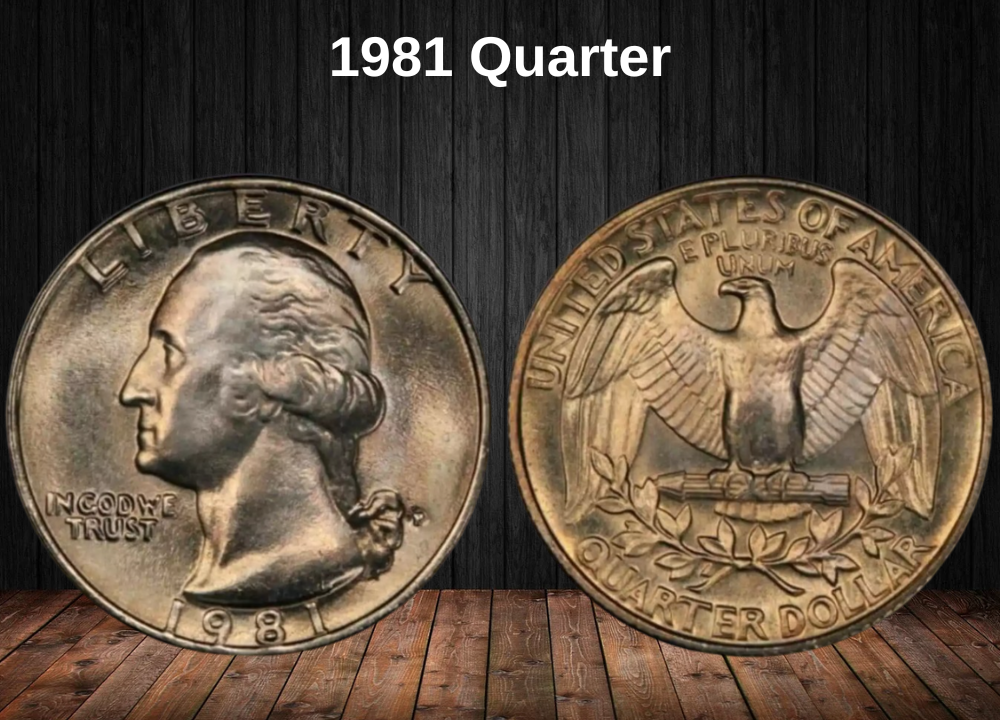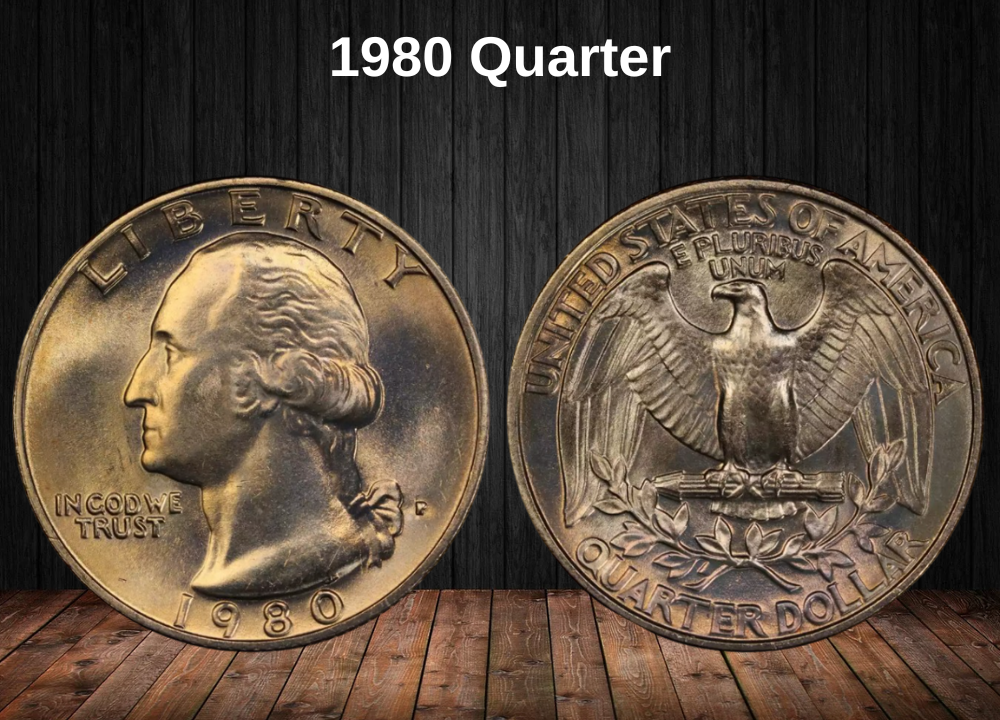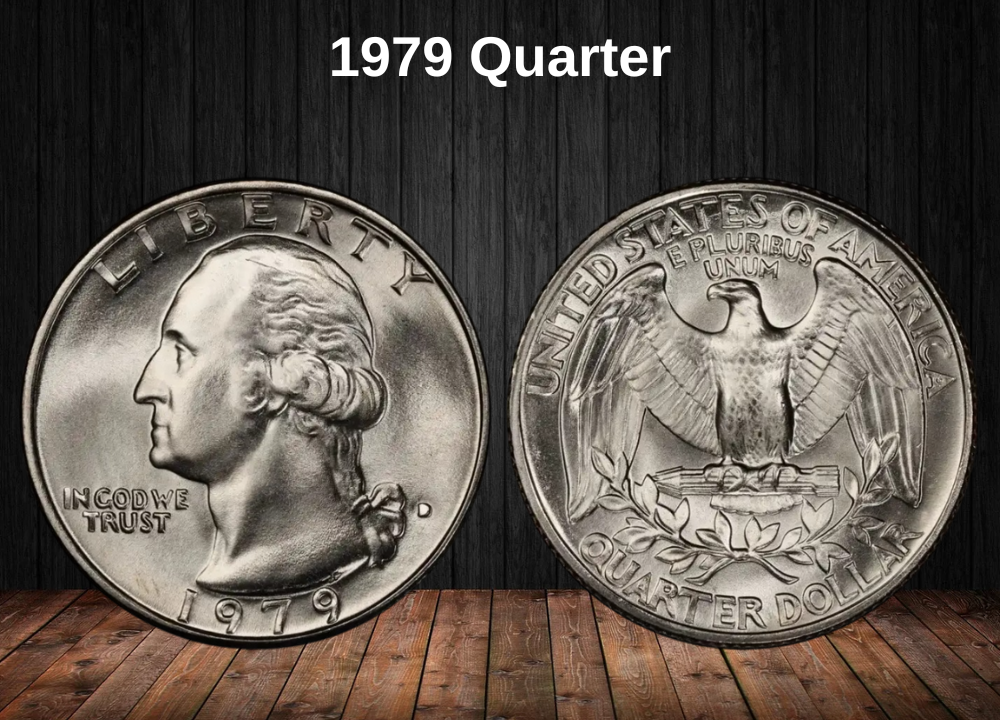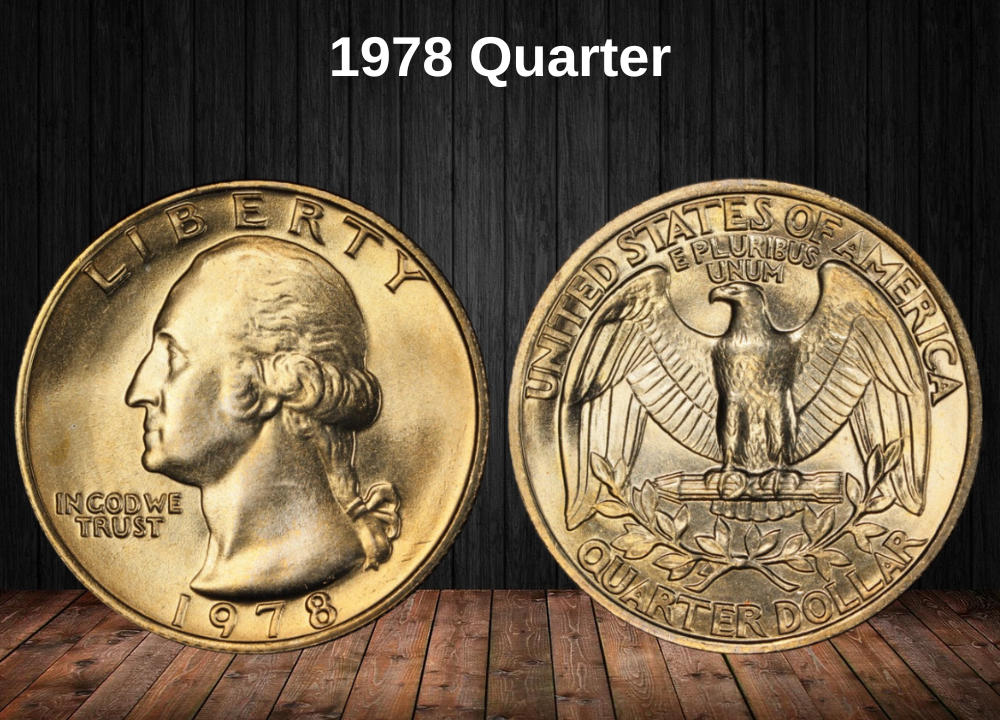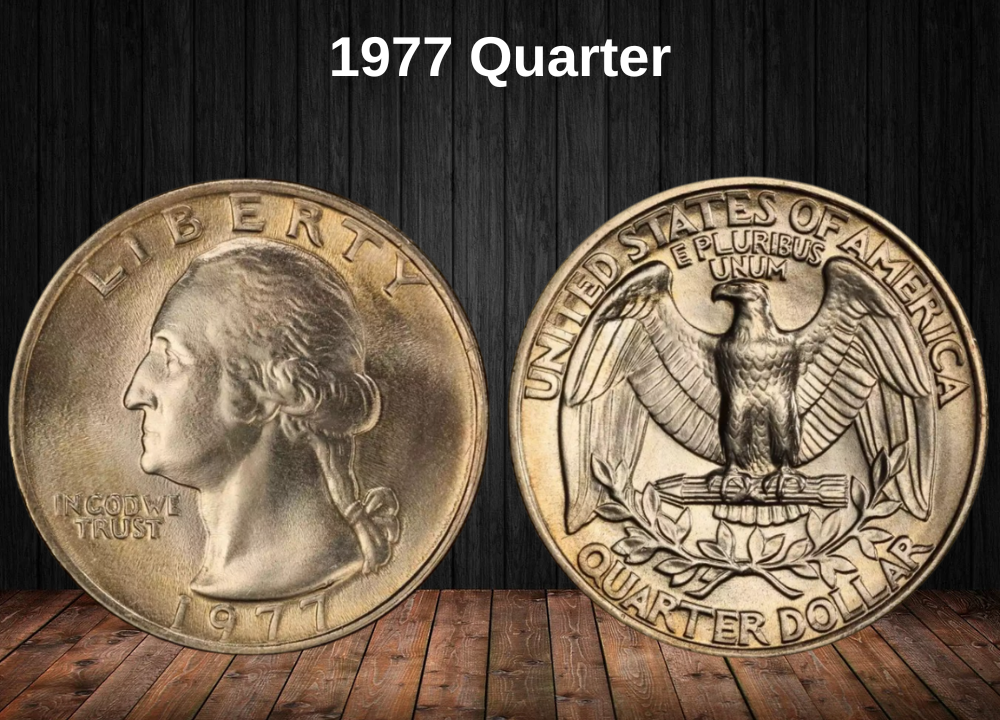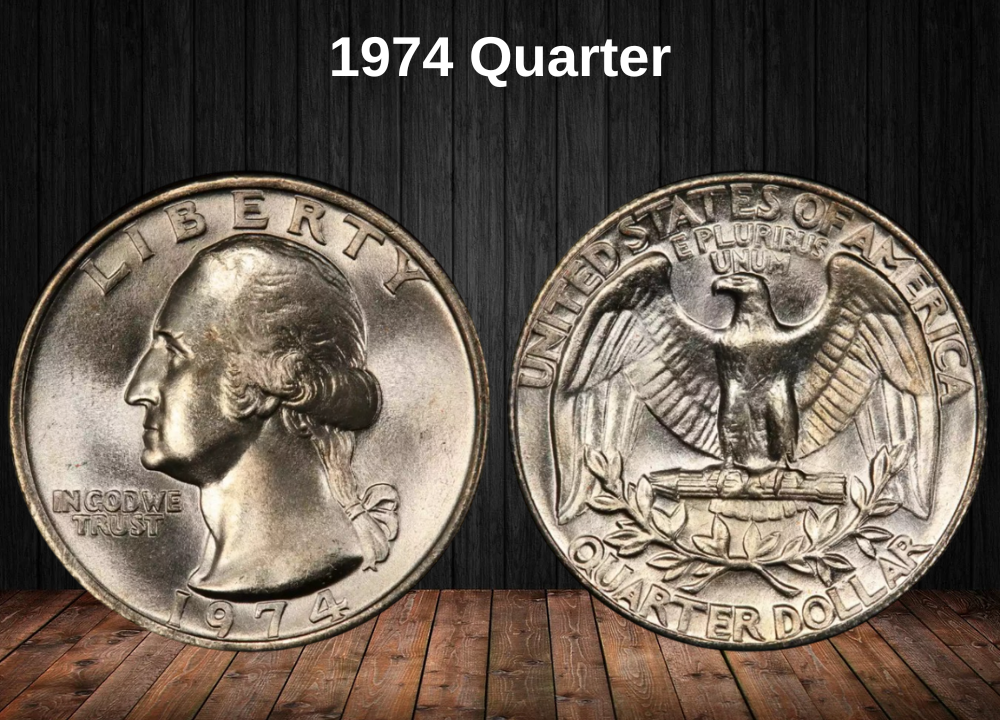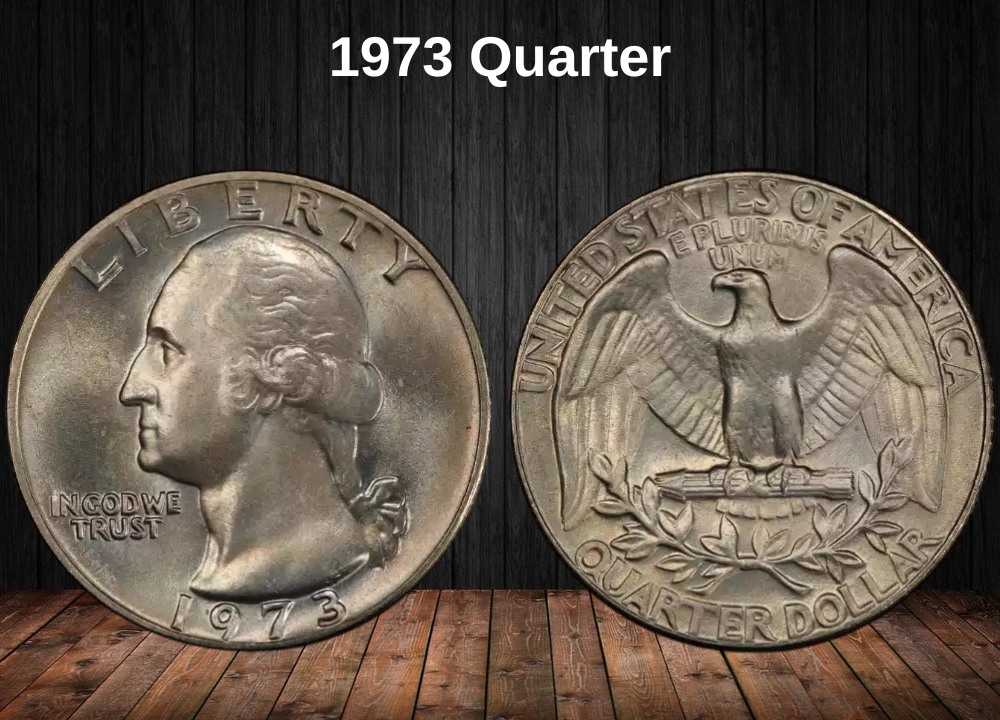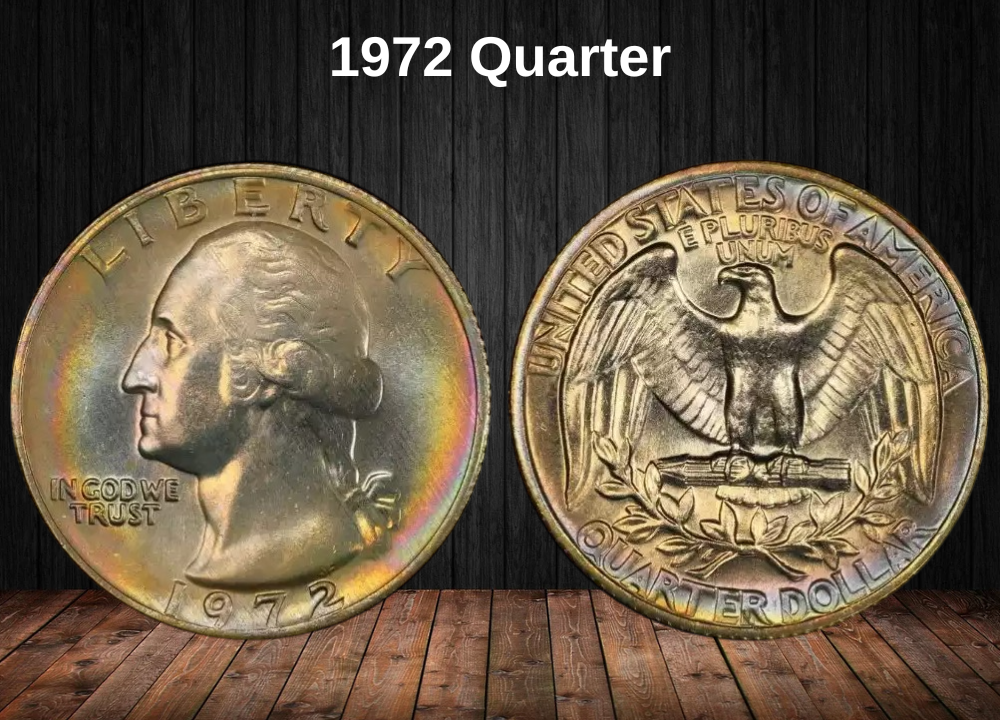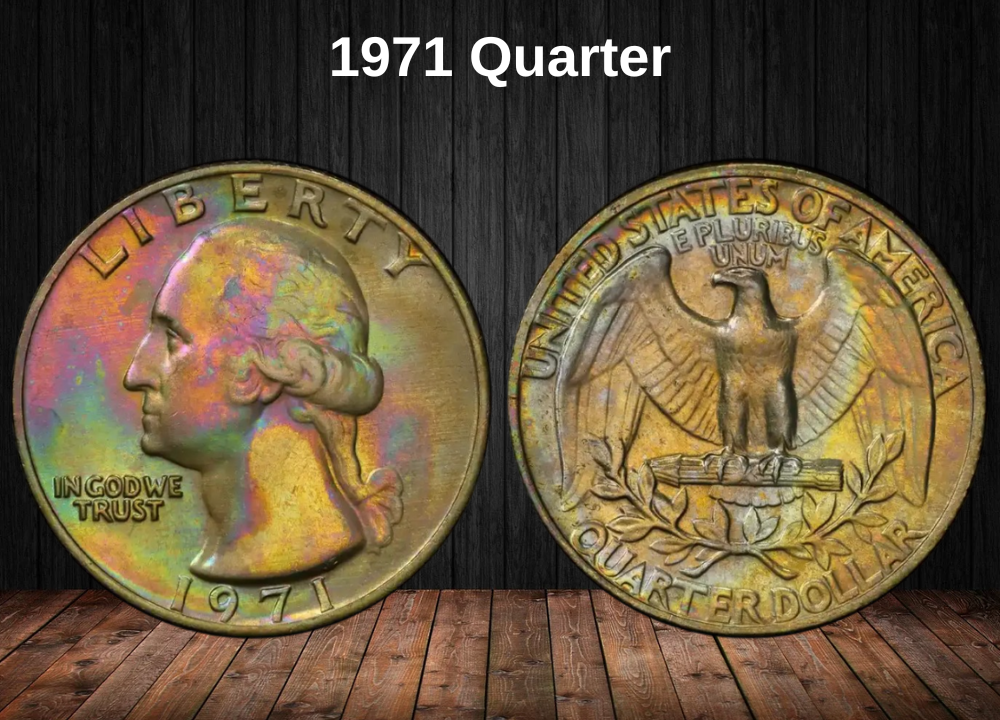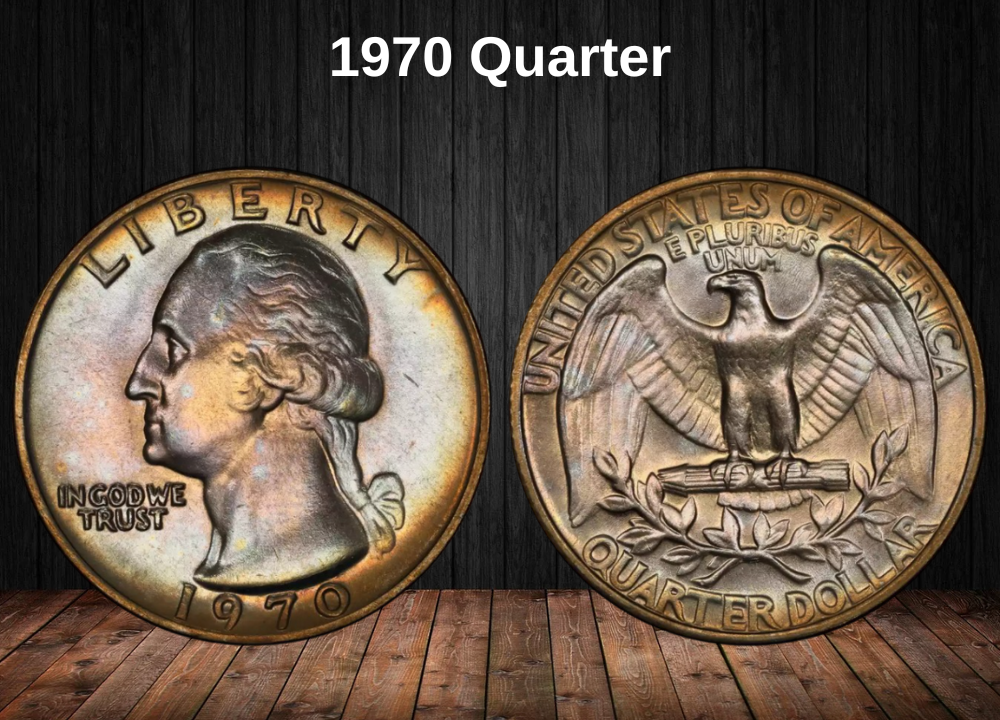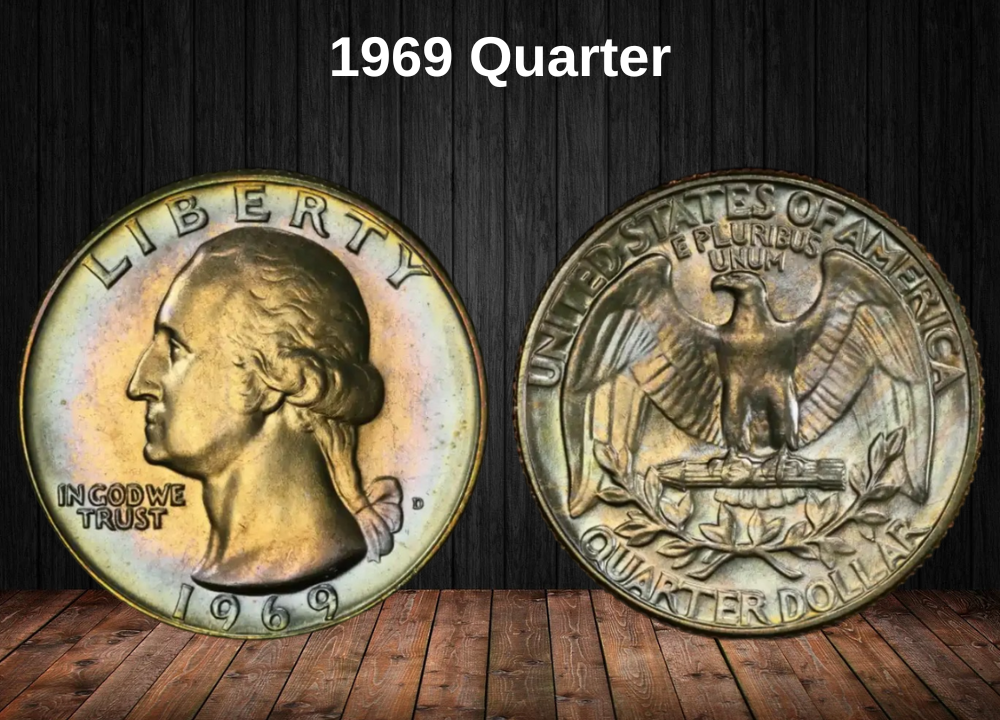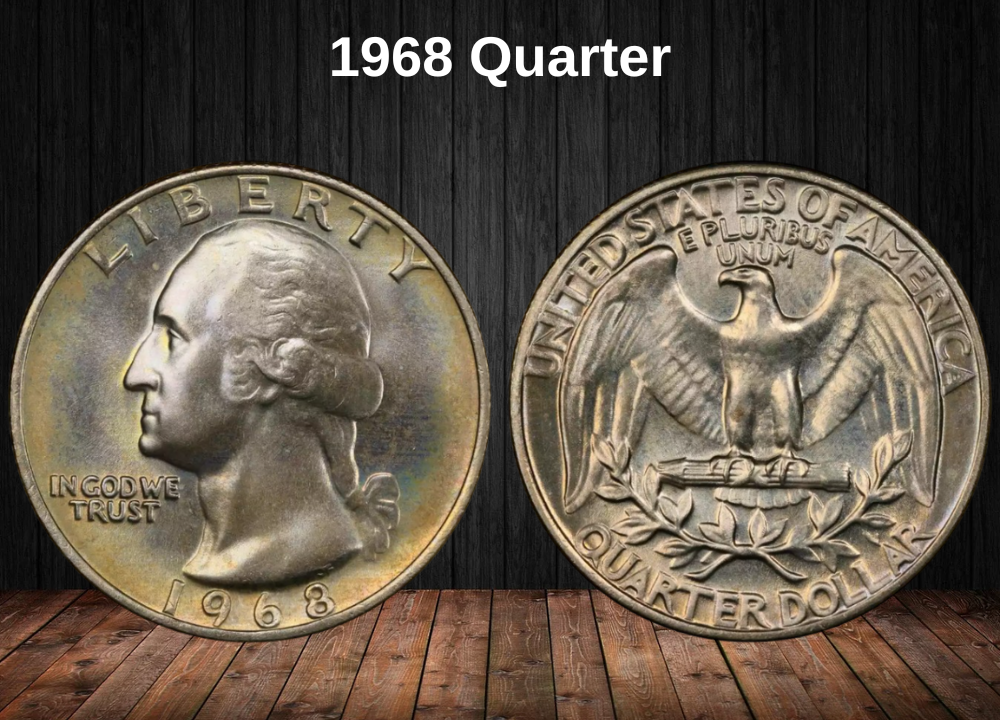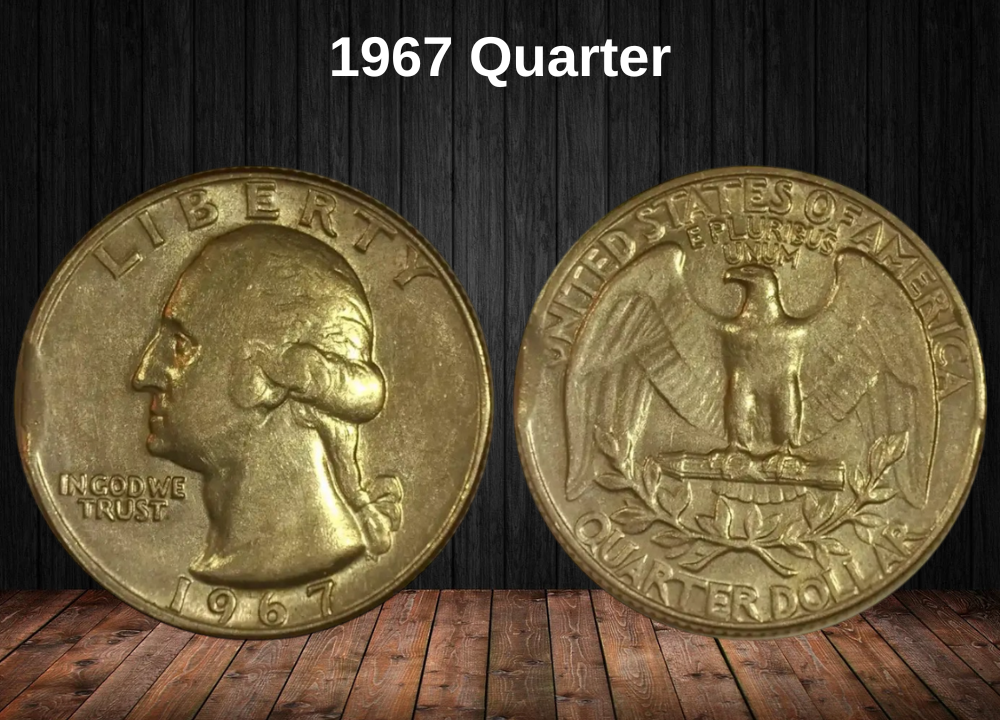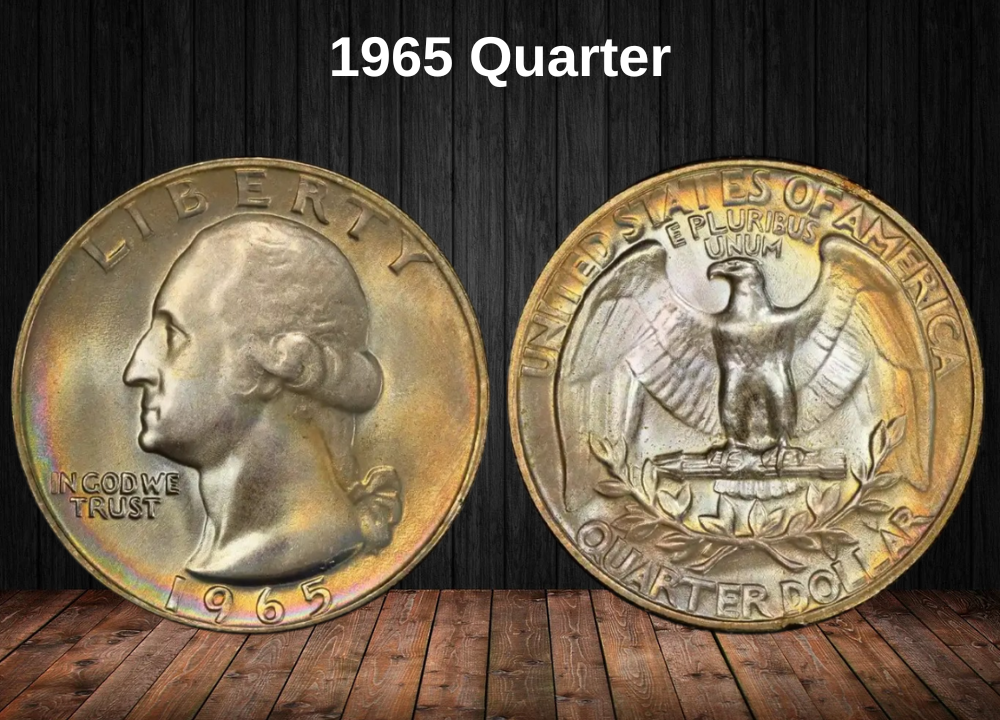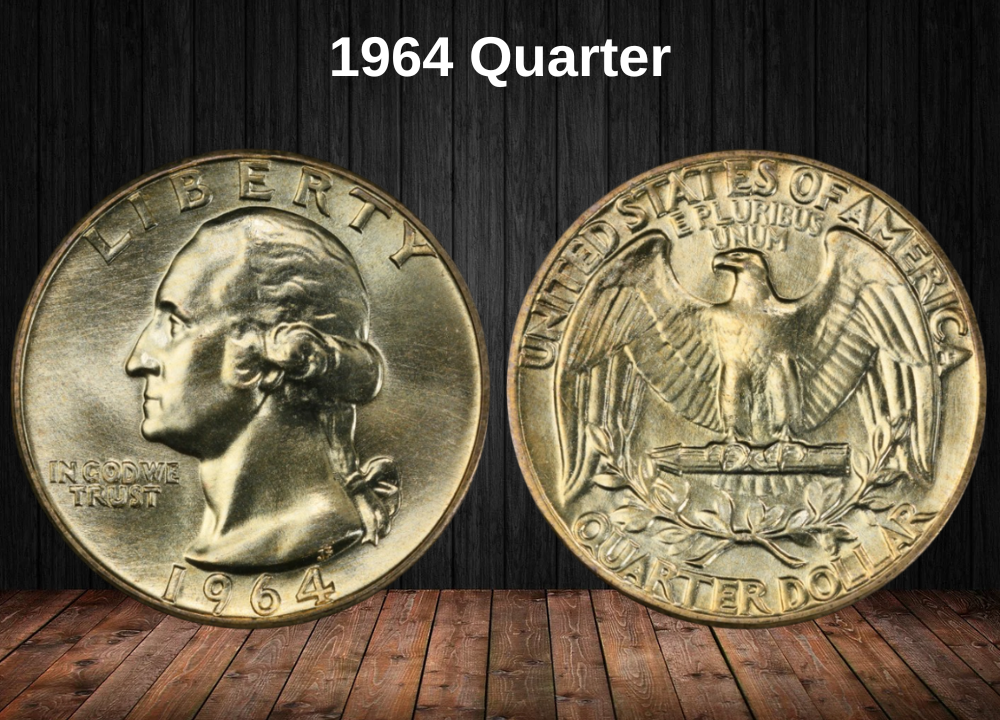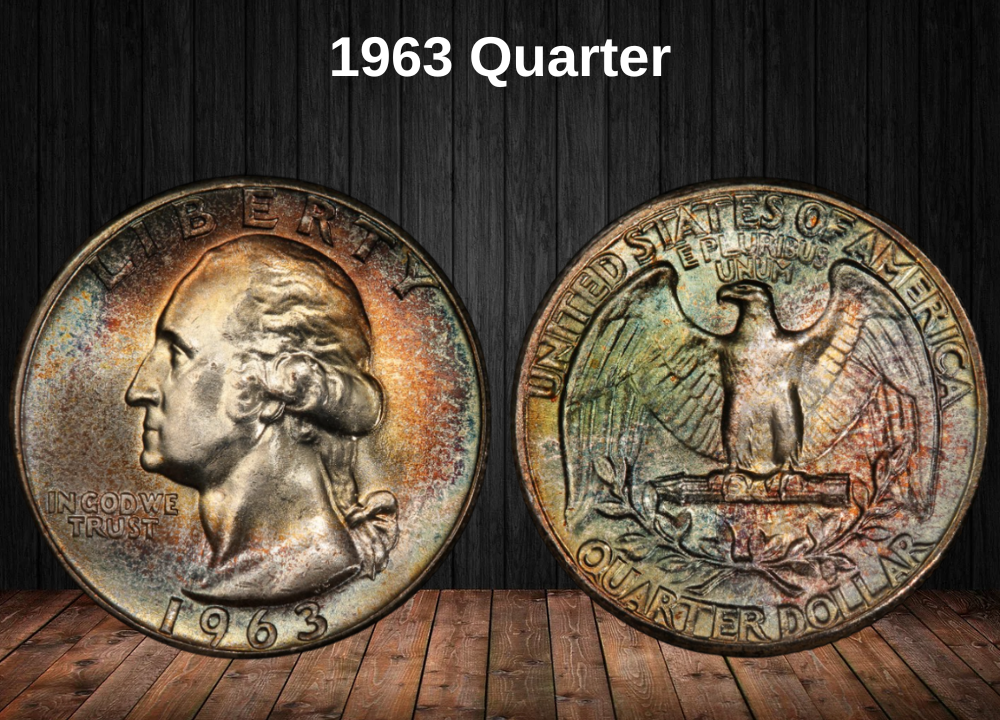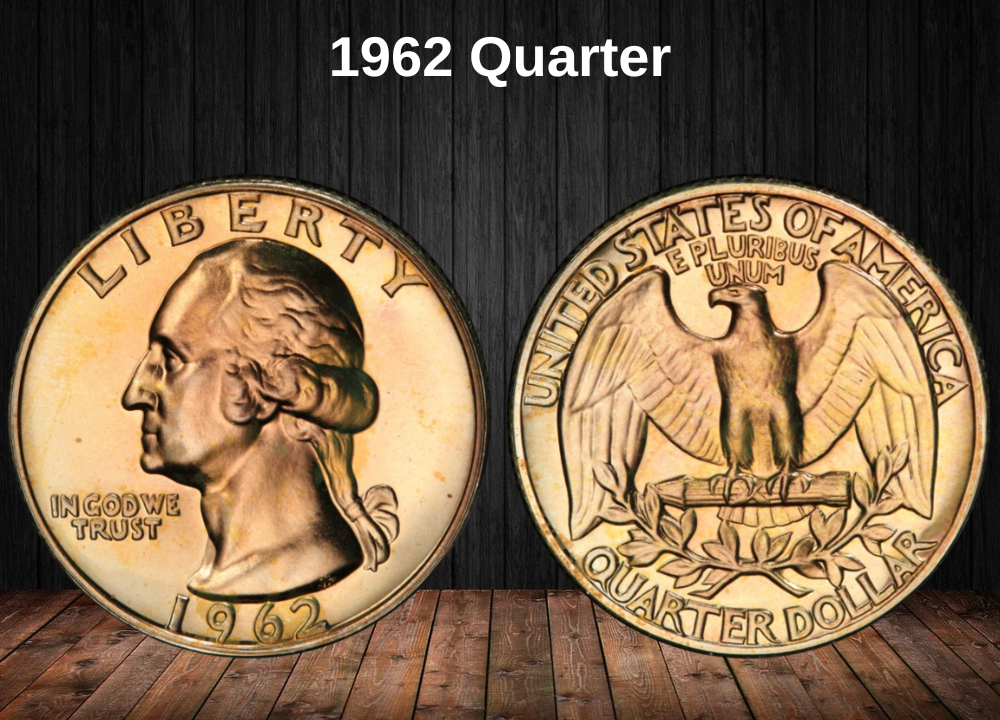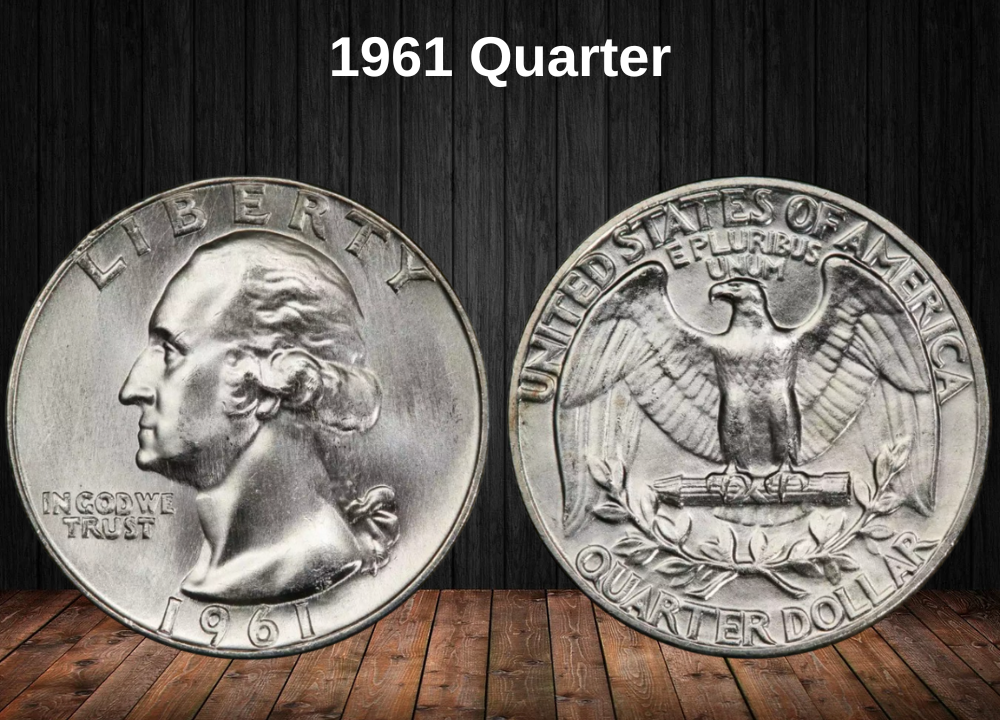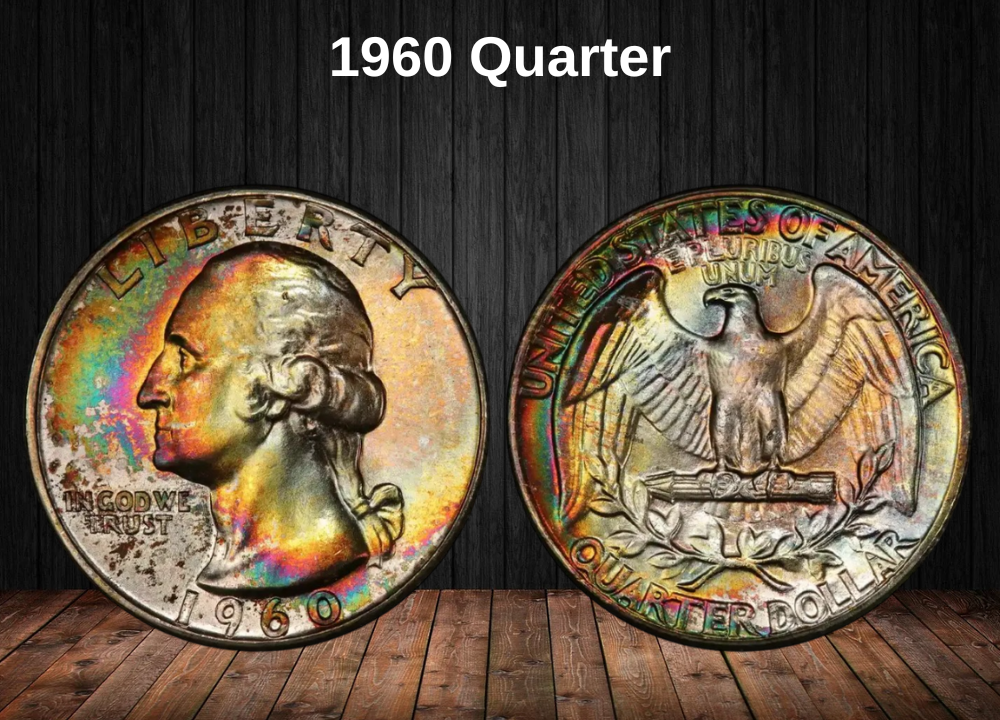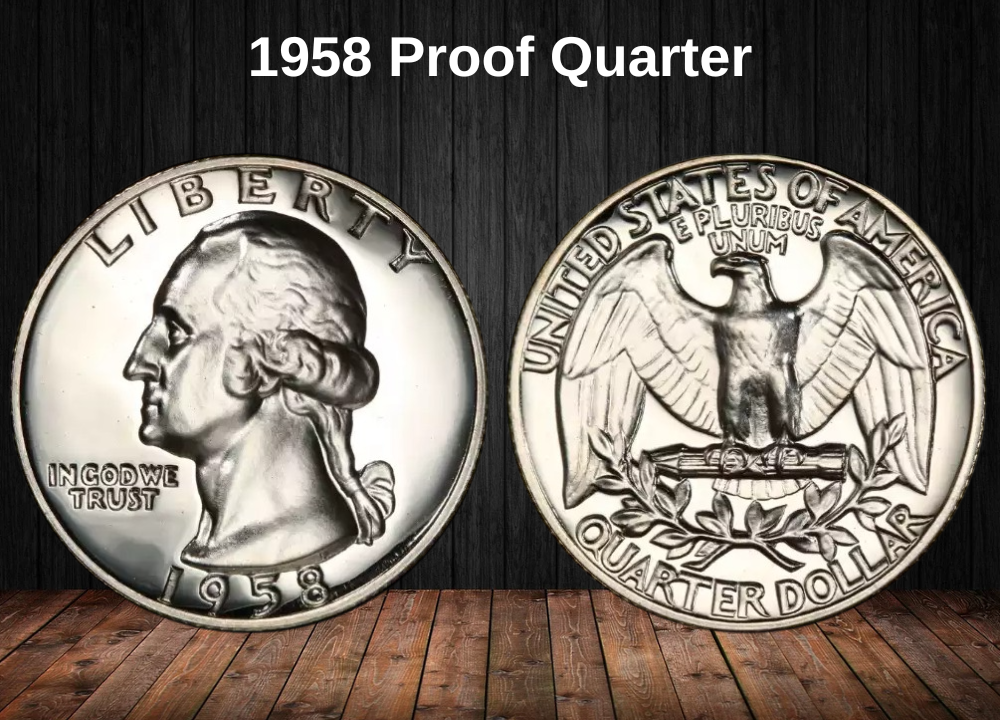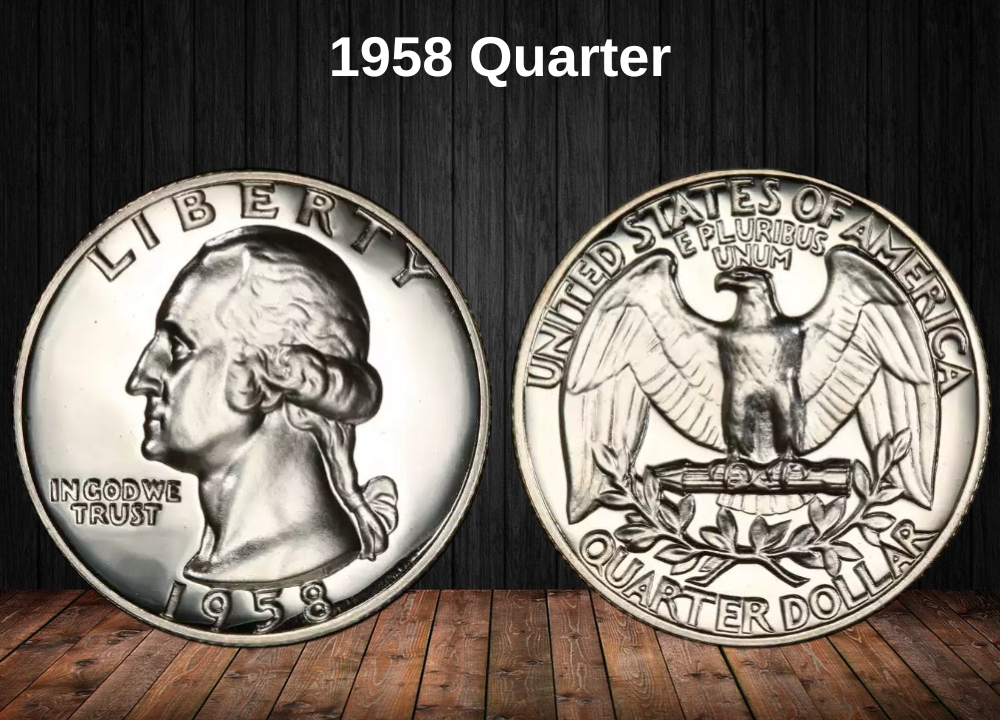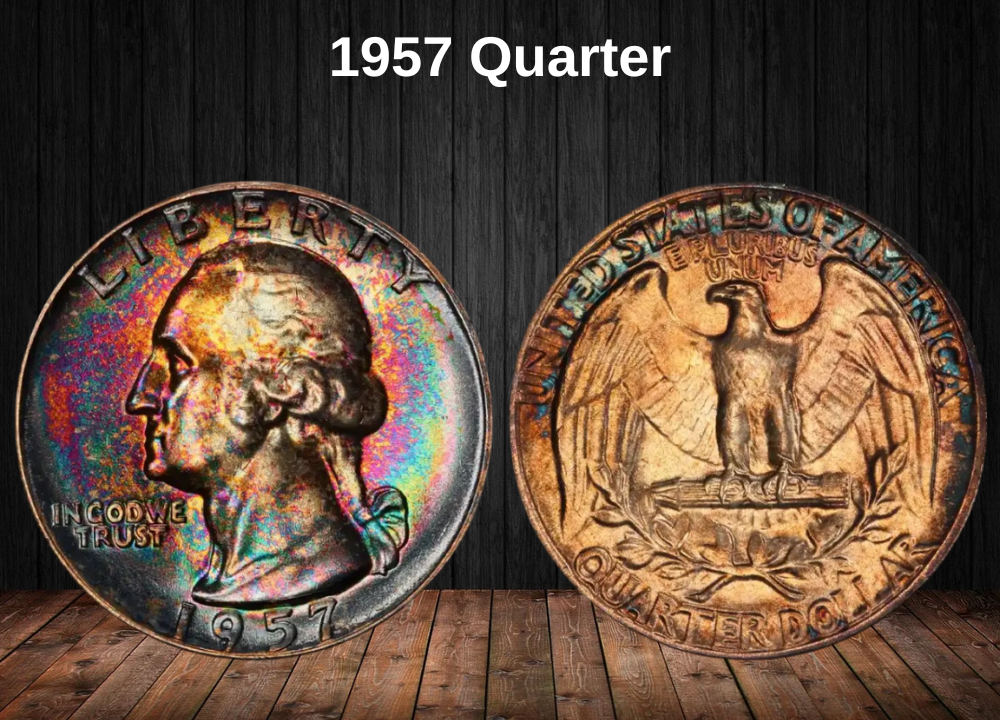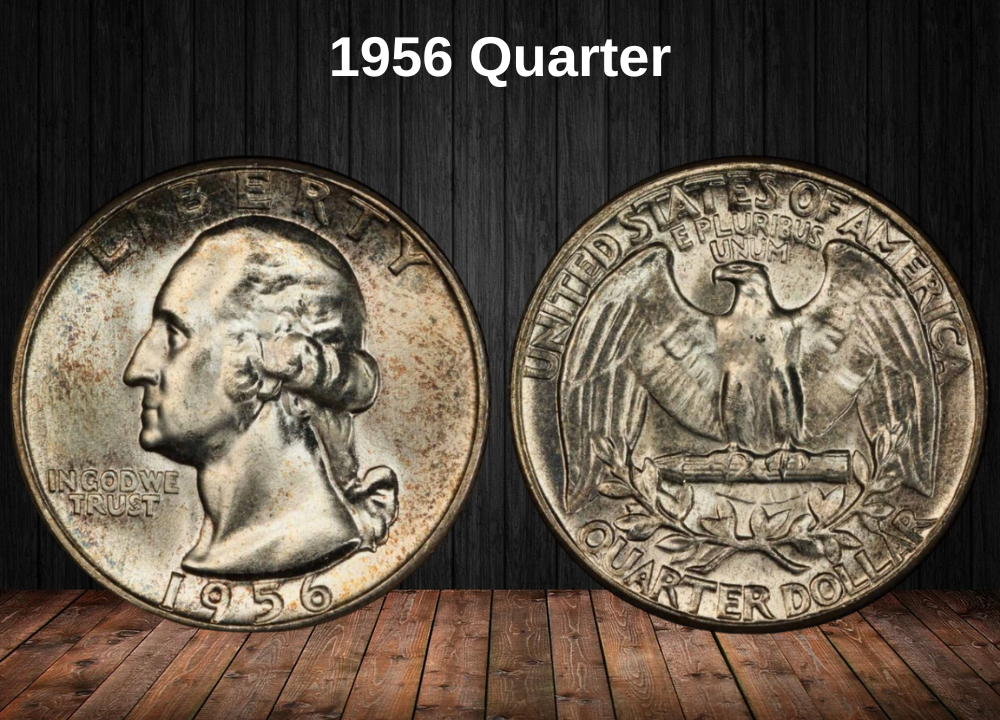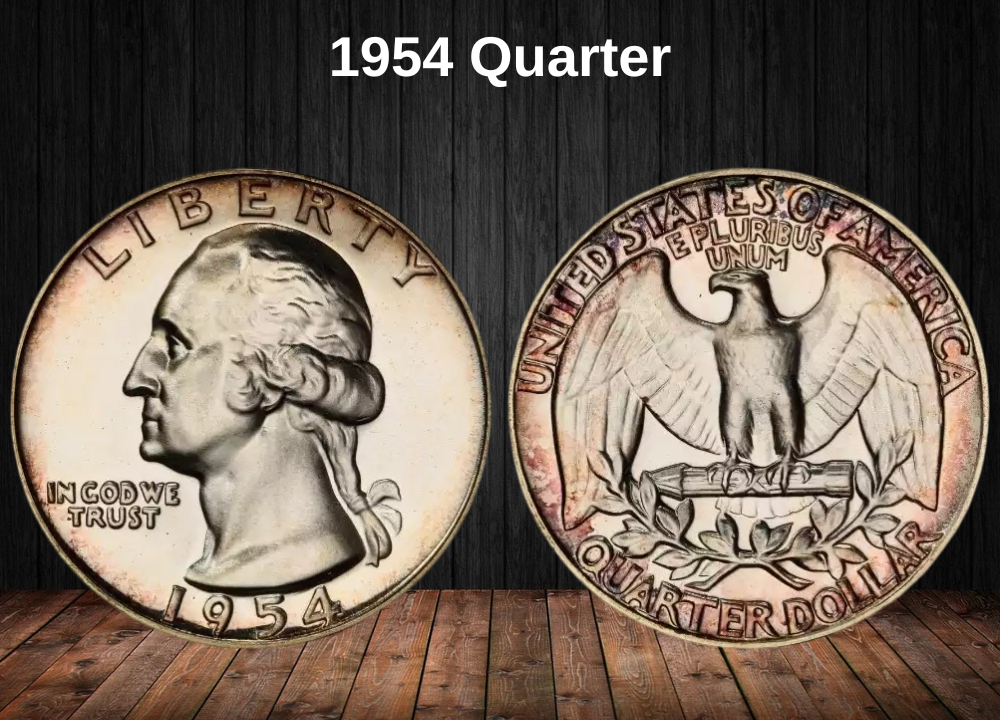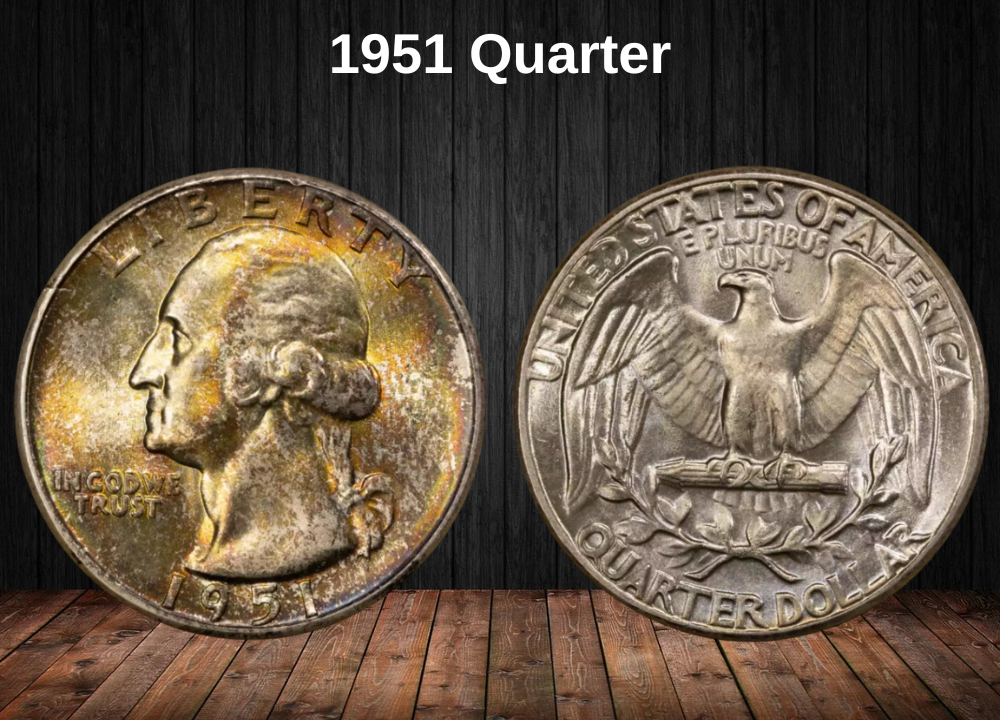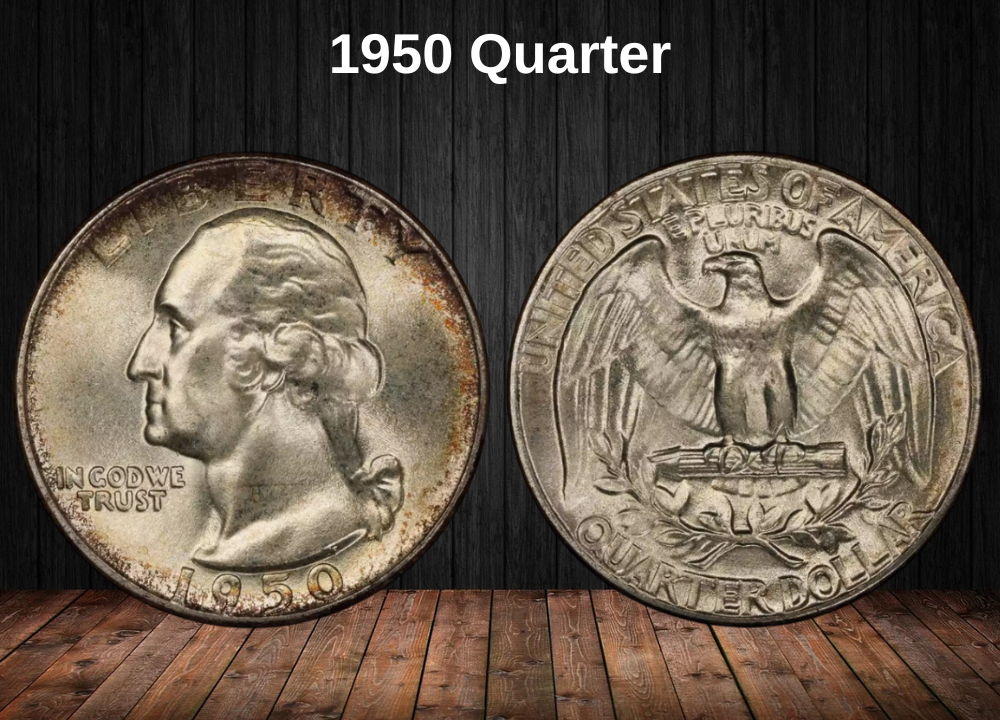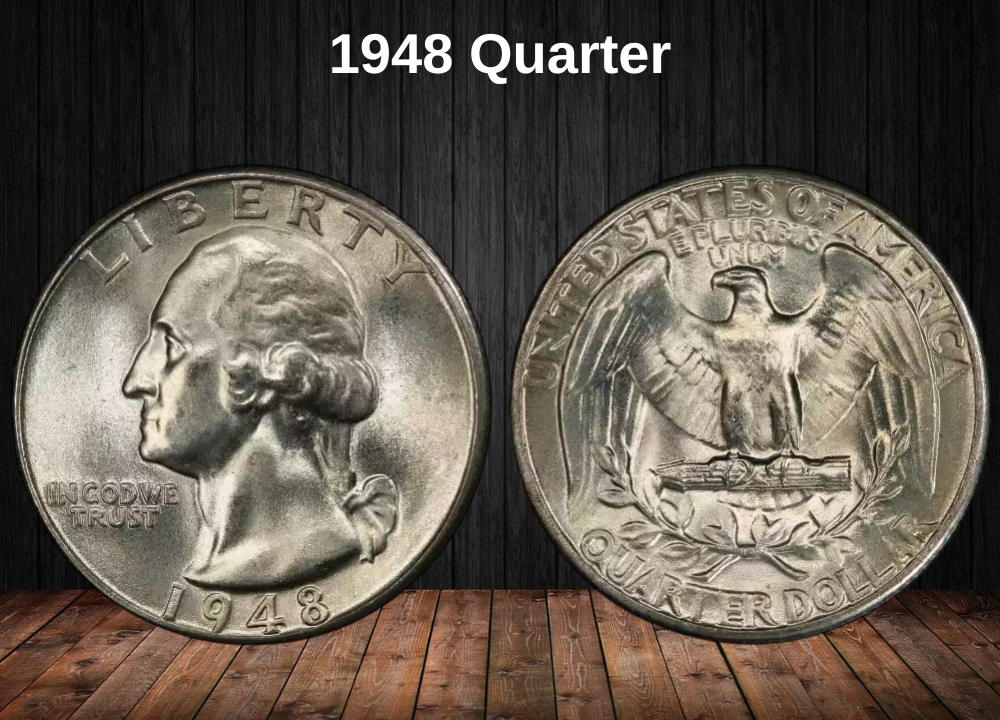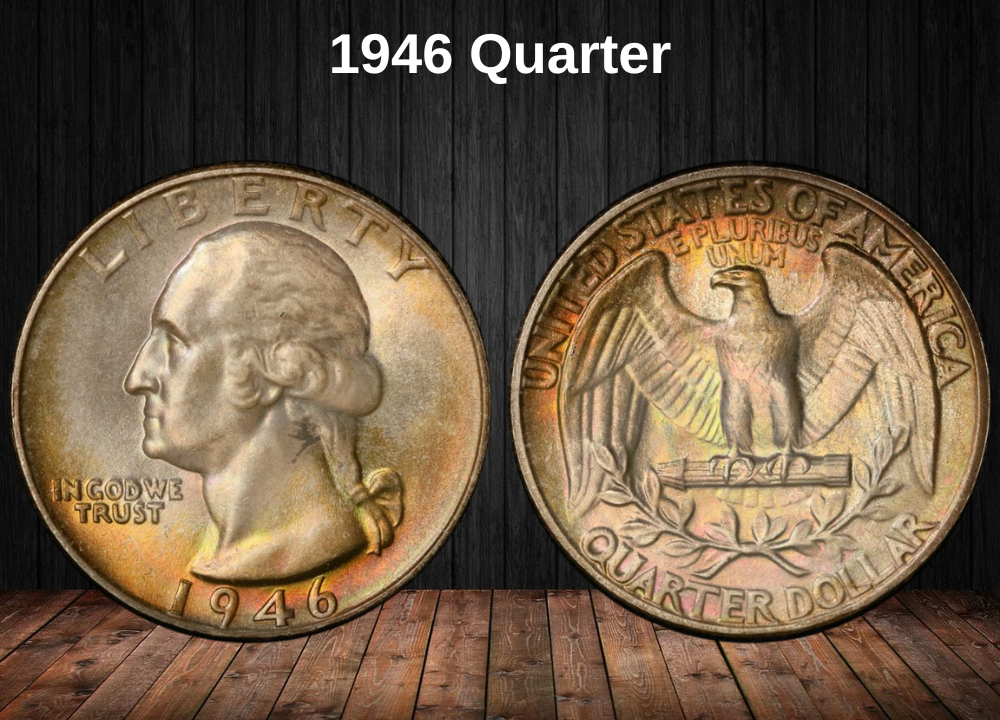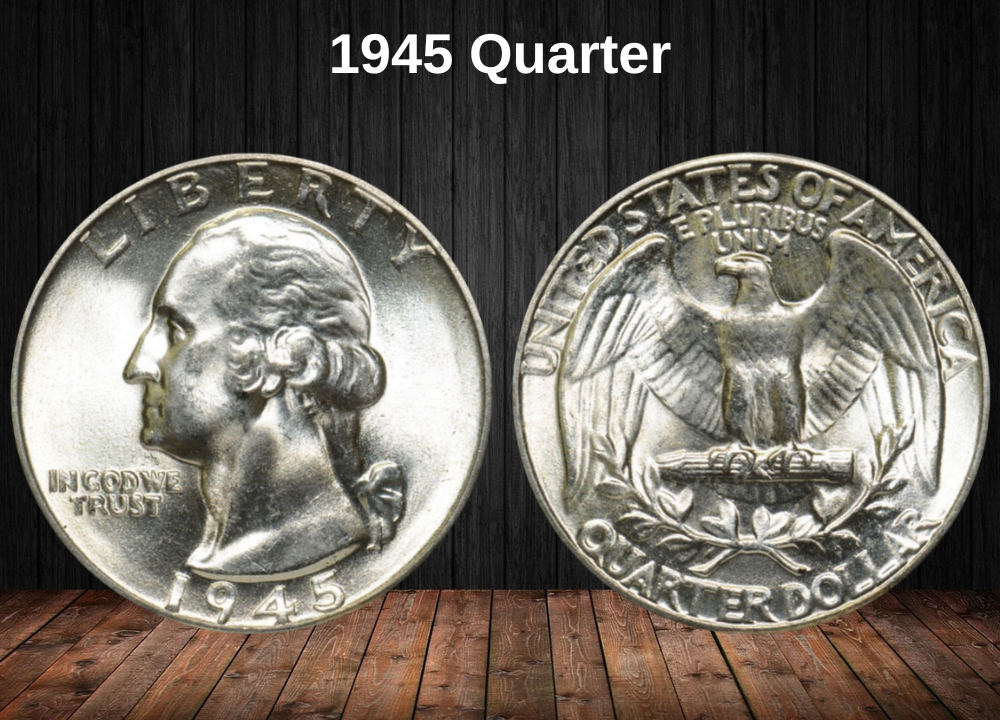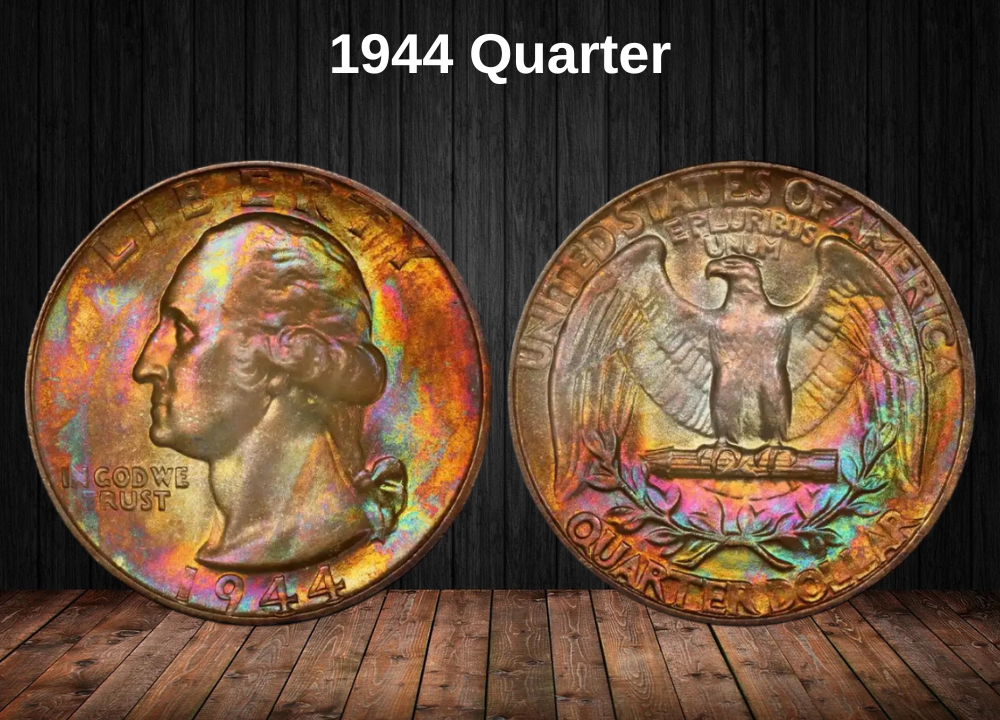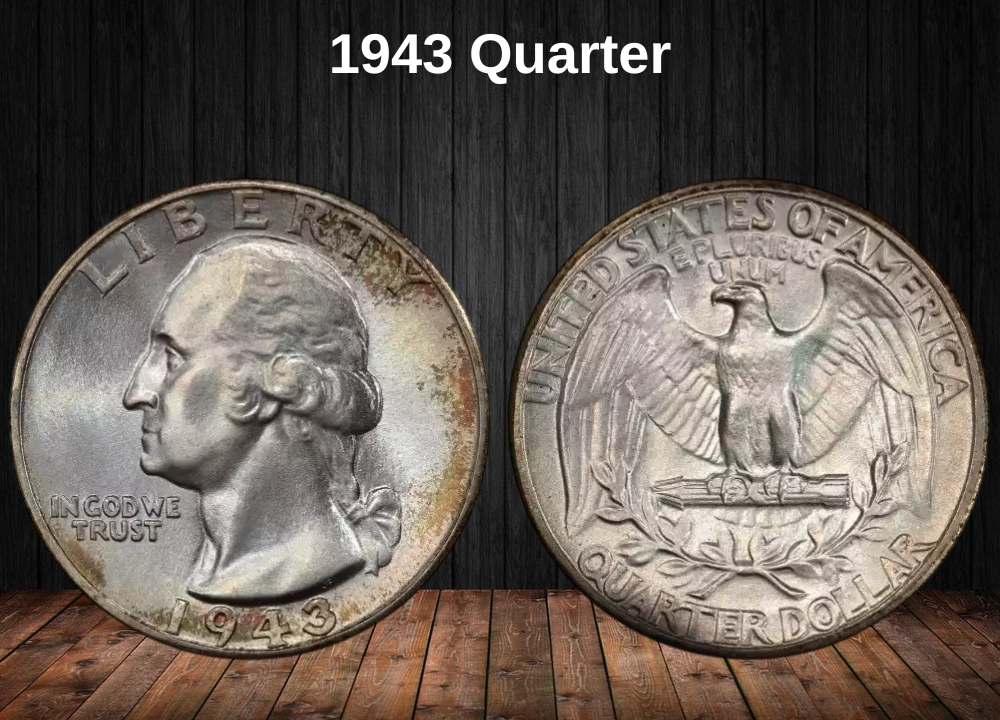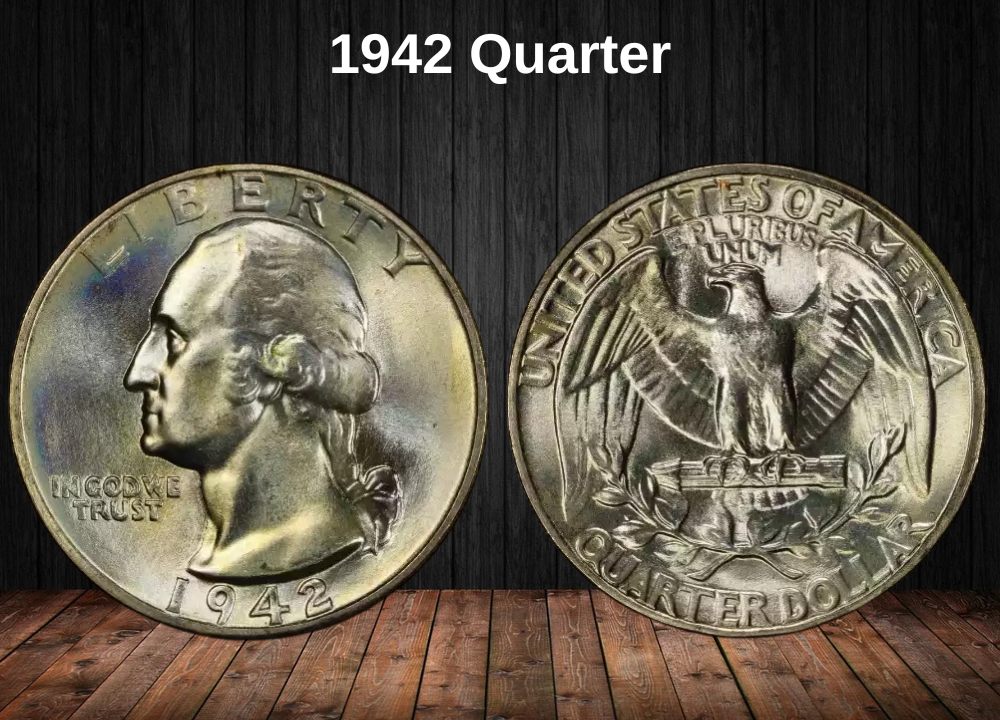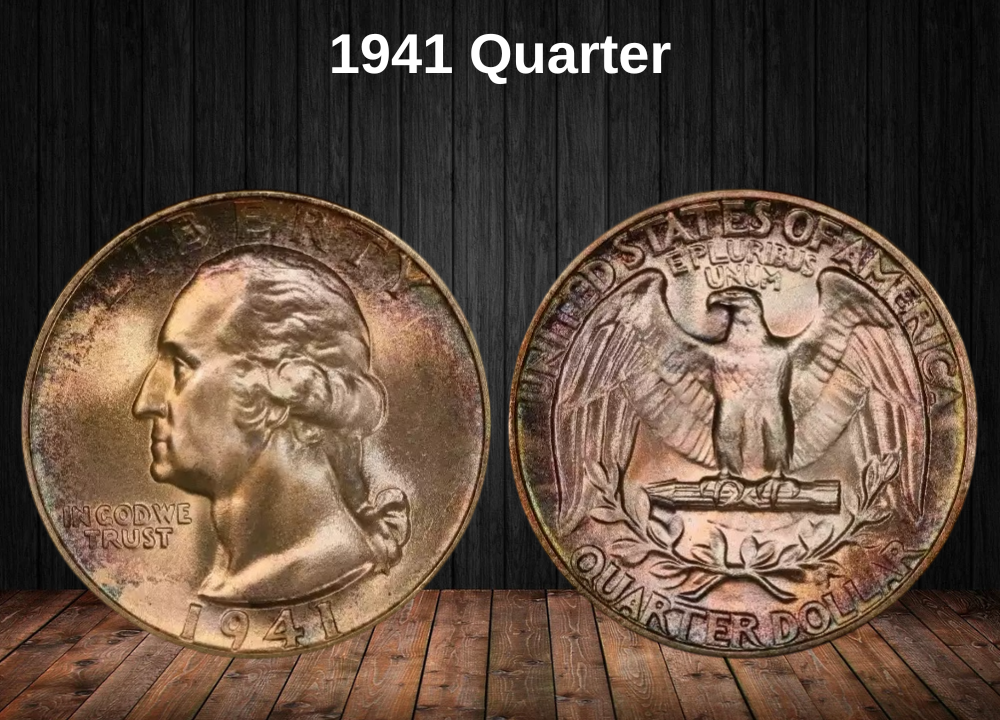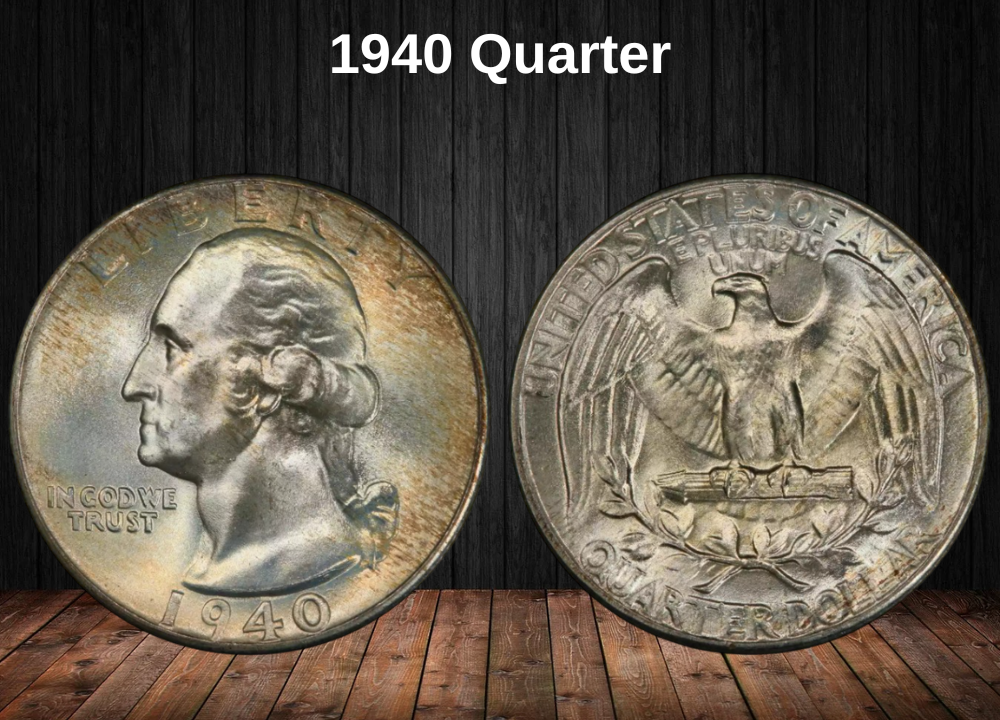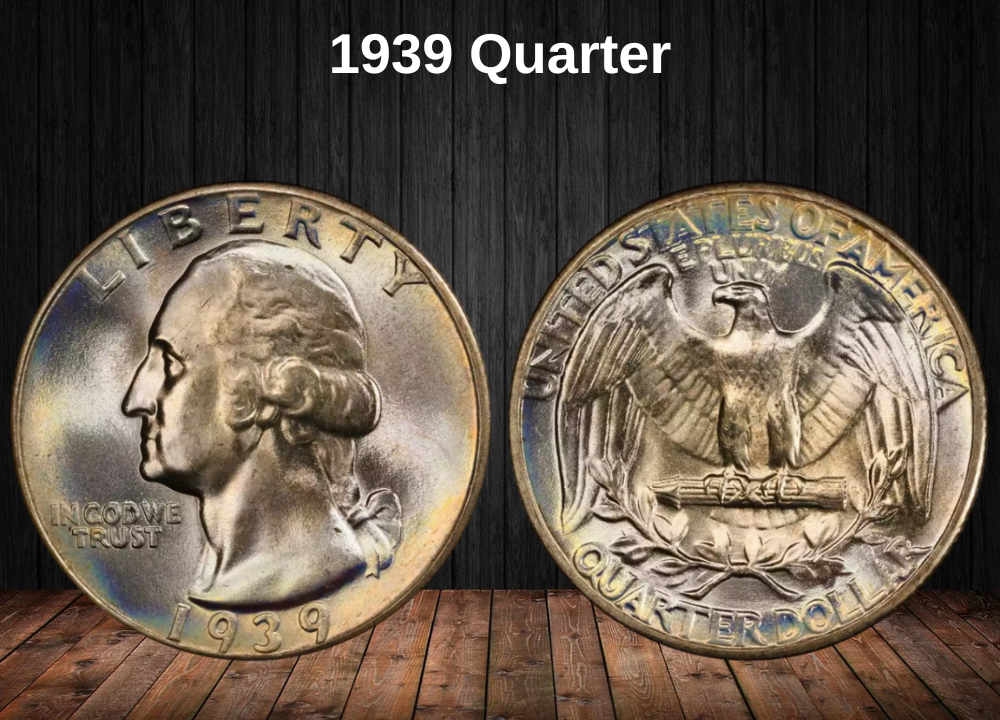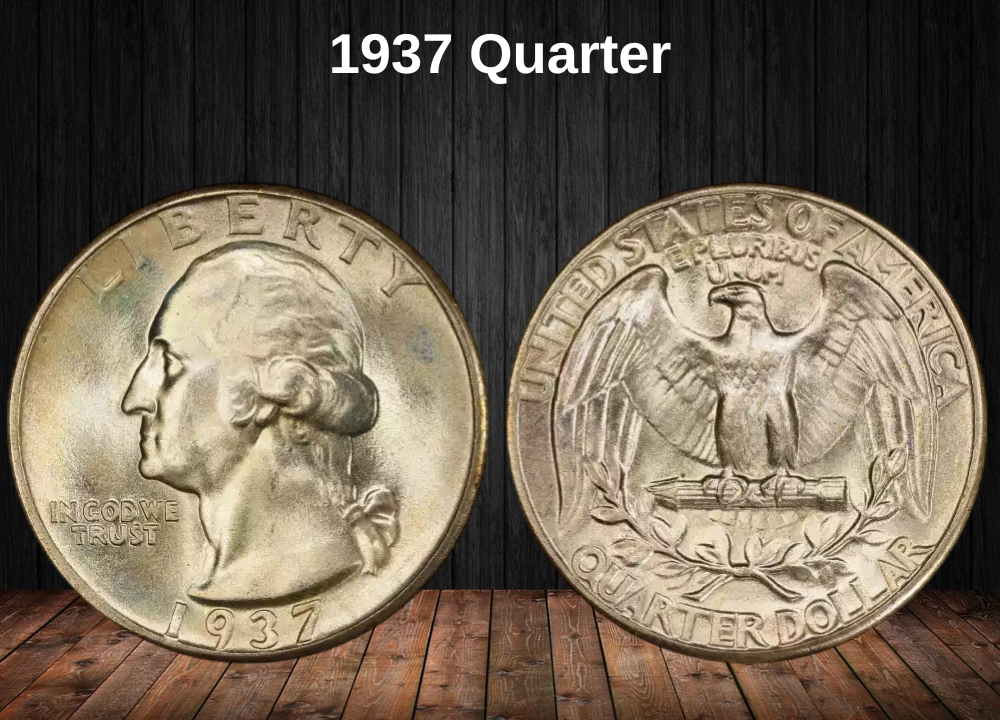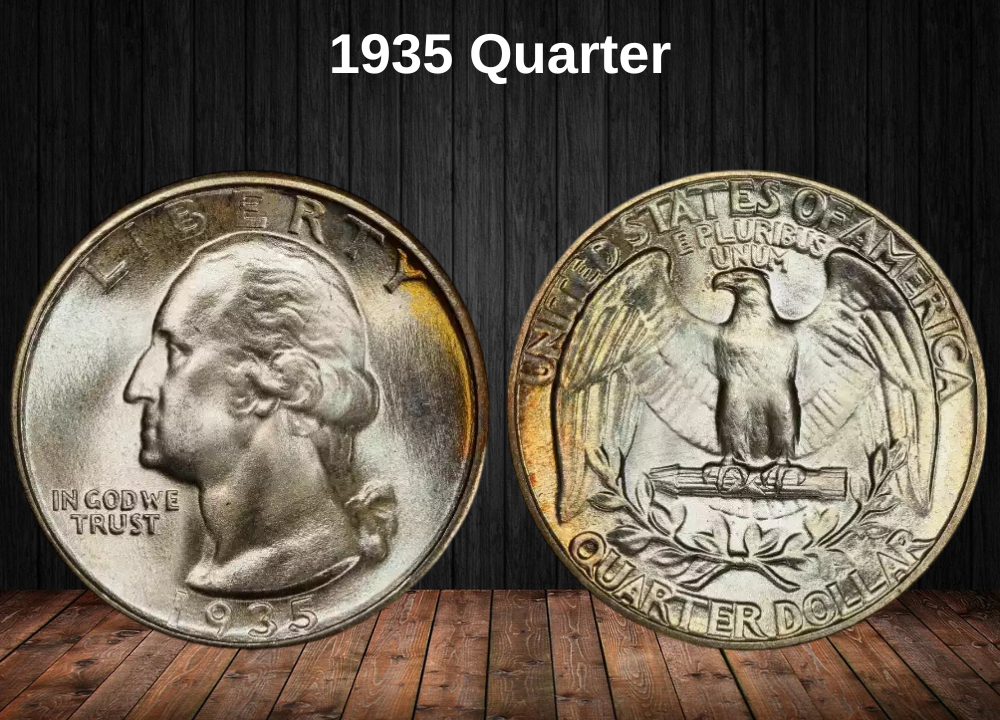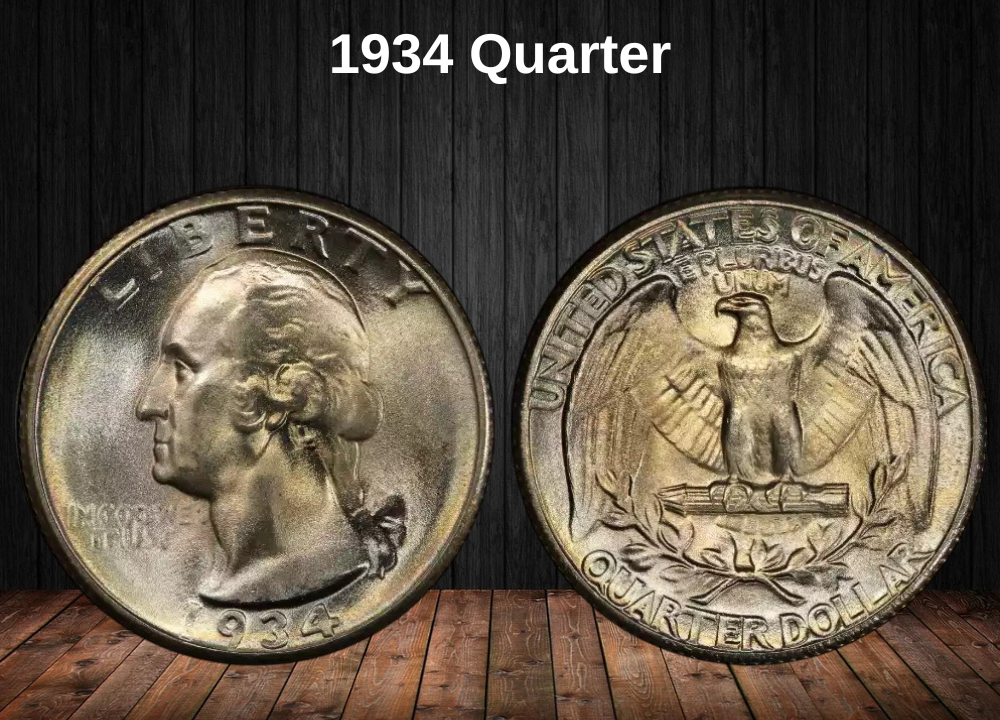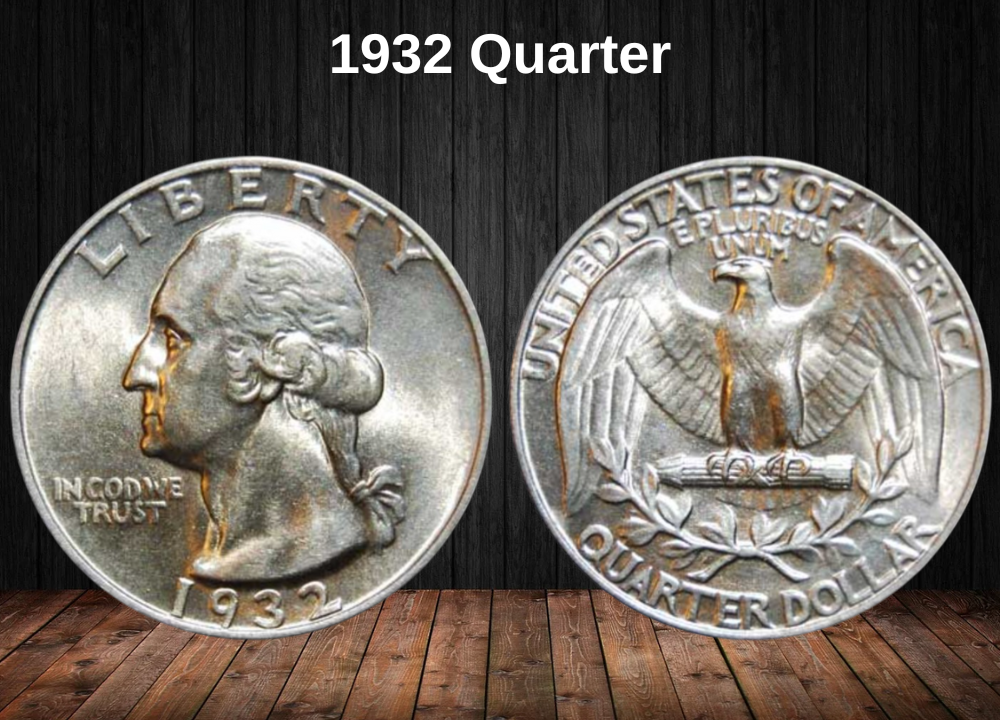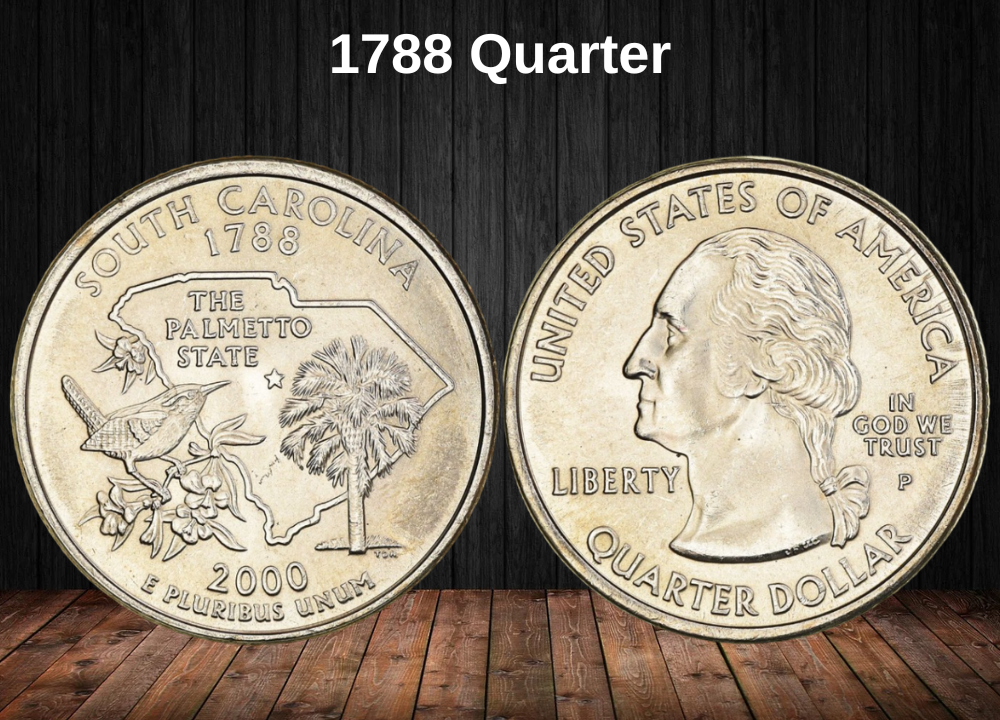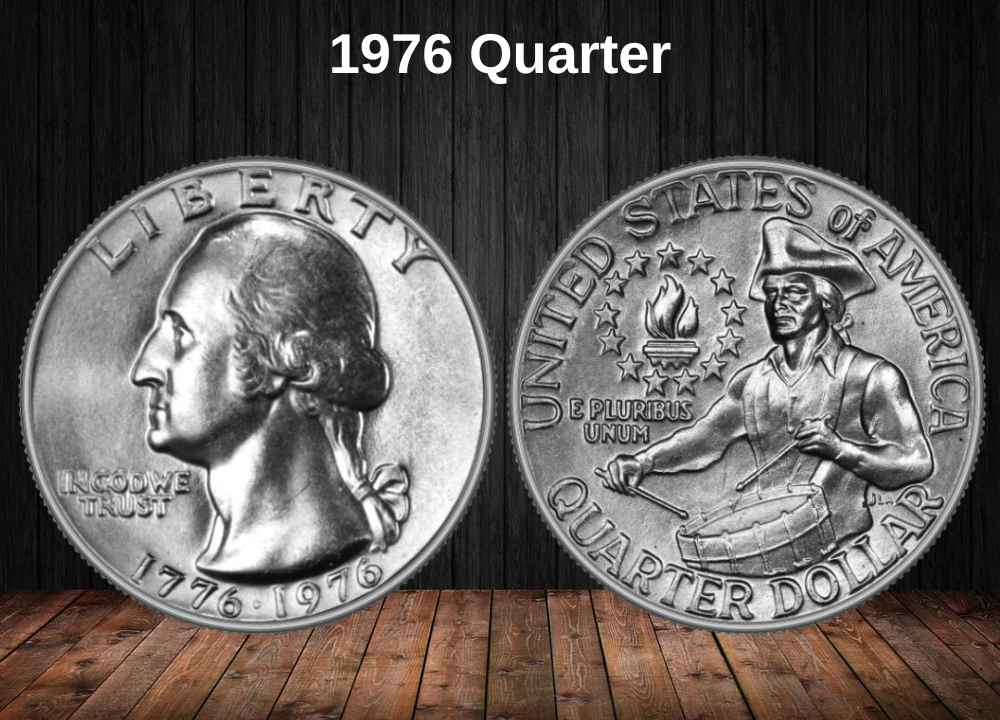The 1966 Washington Quarter holds a unique place in U.S. coinage history as the second year of copper-nickel clad production, following the 1965 transition that ended over 170 years of silver coinage. Like all quarters struck from 1965 to 1967, these coins carry no mint marks, as part of the Mint’s strategy to discourage hoarding during the national coin shortage.
With more than 821 million pieces struck exclusively at the Philadelphia Mint, most 1966 quarters remain common today, especially in circulated grades. For collectors, however, condition plays a defining role in value. Circulated examples trade at face value, but Mint State coins can reach $11, while the Special Mint Set (SMS) issues from that year command much higher premiums depending on finish quality.
The SMS coins, struck with extra care to showcase sharper detail and smoother surfaces, represent the most collectible varieties of 1966 quarters. Cameo (CAM) and Deep Cameo (DCAM) designations significantly boost value, with DCAM examples reaching nearly $450, making them the pinnacle of this year’s offerings.
1966 Quarter Value By Variety
The following chart outlines the current market values of 1966 quarters across different varieties and grades:
| Type | Good (G4) | Fine (F12) | About Unc. (AU50) | Mint State (MS60+) | Proof (PR) |
|---|---|---|---|---|---|
| 1966 No Mint Mark Quarter Value | $0.25 | $0.29 | $0.67 | $11.00 | — |
| 1966 SMS Special Strike Quarter Value | — | — | $1.00 | $10.43 | — |
| 1966 SMS Special Strike CAM Quarter Value | — | — | — | $26.86 | — |
| 1966 SMS Special Strike DCAM Quarter Value | — | — | — | $446.71 | — |
History of the 1966 Quarter
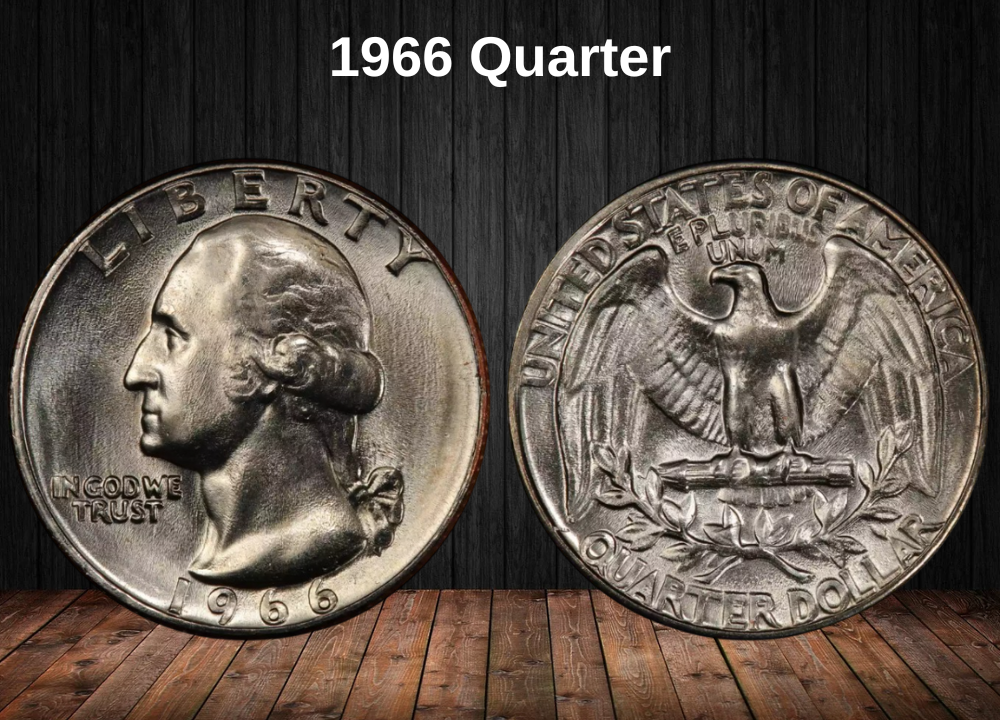
The 1966 Washington Quarter was struck during one of the most pivotal transitions in American numismatic history—the nationwide shift from silver coinage to copper-nickel clad.
This change followed the 1965 removal of silver from quarters and dimes, prompted by surging bullion prices and widespread hoarding of 90% silver coins. By mid-1960s, the metal value of circulating silver coins was approaching or exceeding face value, creating a national coin shortage and forcing the U.S. Mint to adapt.
President Lyndon B. Johnson’s 1965 announcement officially ended the era of silver quarters, replacing them with coins composed of 91.67% copper and 8.33% nickel. This change wasn’t just an adjustment in metal—it marked a fundamental policy shift, symbolizing the government’s move to stabilize currency supply during economic stress.
Production challenges made the year especially turbulent. Striking of 1966 quarters was delayed, and the first examples didn’t reach circulation until August 1966, five months into the year. To help discourage speculation, the Mint also suspended the use of mint marks between 1965 and 1967, meaning all 1966 quarters were struck at the Philadelphia Mint and carry no mint mark.
A total of 821 million coins were minted in this compressed schedule, making them plentiful in circulation. However, no proof coins were issued this year. Instead, collectors received Special Mint Sets (SMS), which offered improved quality over business strikes and served as experimental substitutes for proofs until their resumption in 1968.
The 1966 quarter thus represents more than a simple date—it embodies the crisis-driven adaptation of U.S. coinage policy. Collectors value these pieces as symbols of a transformative era when the nation permanently abandoned silver coinage and embraced modern clad designs.
Key Features of the 1966 Quarter
The 1966 Washington Quarter, designed by John Flanagan, carried forward the same elegant and symbolic imagery first introduced in 1932 to honor America’s first president. Though simple in appearance, its design elements reflected the nation’s values of strength, independence, and peace.
The Obverse of the 1966 Quarter

The obverse showcases George Washington’s profile facing left, dominating the design. Above his portrait appears the bold inscription “LIBERTY”, while the date 1966 rests below the bust along the rim.
To the left, positioned in line with Washington’s neckline, is the national motto “IN GOD WE TRUST.” Beneath the neckline truncation are the subtle initials JF, a tribute to the coin’s designer, John Flanagan.
The Reverse of the 1966 Quarter
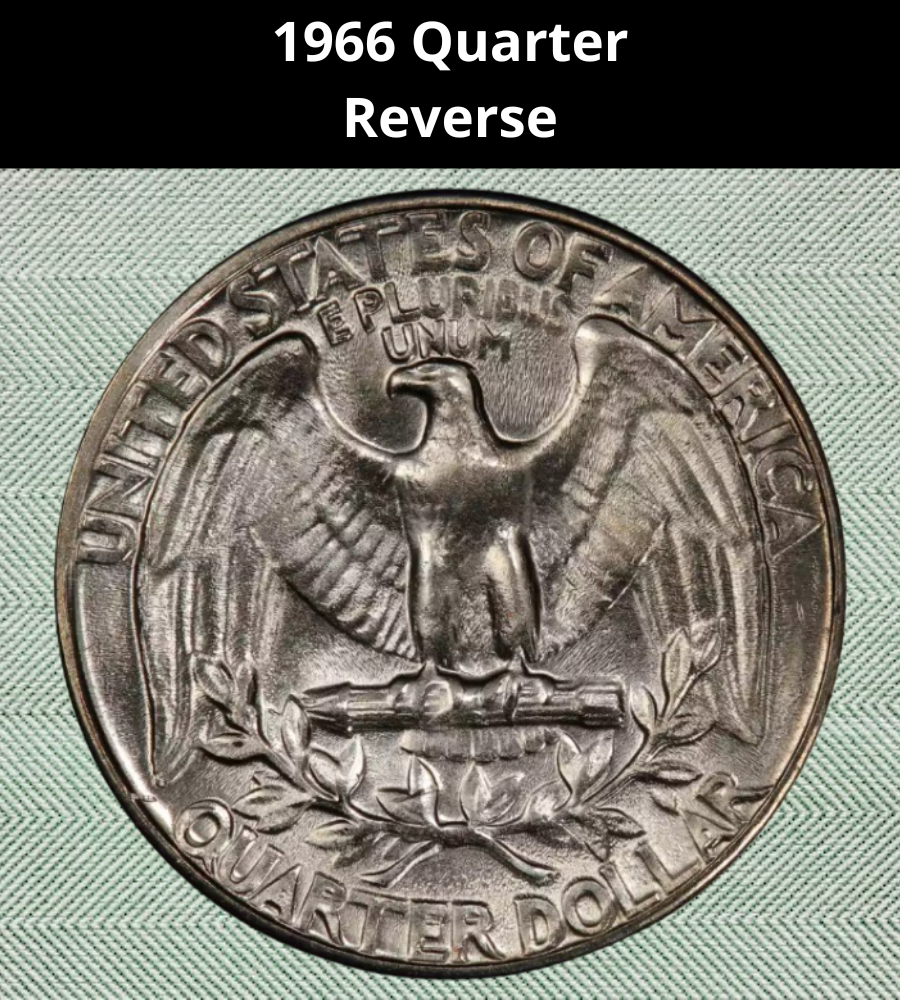
The reverse features a heraldic eagle with wings spread wide, clutching a bundle of arrows in its talons. This imagery symbolizes the United States’ strength and readiness to defend itself. Below the eagle, two olive branches form a wreath, representing peace and balance.
Encircling the upper rim is the inscription “UNITED STATES OF AMERICA,” with the motto “E PLURIBUS UNUM” positioned just beneath it. The denomination “QUARTER DOLLAR” is inscribed along the lower rim, completing the design.
Symbolism
Every design choice carries meaning:
- The Eagle – national strength and independence.
- The Arrows – readiness for defense.
- The Olive Branches – America’s pursuit of peace.
Together, these features reflect the dual ideals of power and diplomacy, perfectly capturing the spirit of the United States during a transitional era in coinage history.
1966 Quarter Grading
| Grade | Diagnostic Features | Approx. Value |
|---|---|---|
| G4 (Good) | Portrait heavily worn, lettering legible but flat; eagle flattened with little feather detail. | $0.25 (face value) |
| F12 (Fine) | Washington’s hair shows outlines but no interior detail; eagle’s wings partially defined. | $0.29 |
| AU50 (About Unc.) | Light wear on cheek and high hair curls; some feather detail visible, luster partially present. | $0.67 |
| MS63 (Mint State) | No wear, moderate contact marks; luster intact but may show minor breaks. | $10 – $15 |
| MS65 (Gem Uncirculated) | Sharp strike, strong luster, only a few small marks visible under magnification. | $50 – $150 |
| MS67+ (Superb) | Nearly flawless, brilliant luster, exceptional strike; extremely rare. | $1,000 – $1,700+ |
1966 Quarter Value Guides
1966 No Mint Mark Quarter Value

The 1966 No Mint Mark Quarter is an important piece of U.S. coinage history, struck during the transitional years when mint marks were temporarily eliminated (1965–1968) to discourage hoarding.
Struck exclusively at the Philadelphia Mint, with a massive mintage of 821,101,500 coins, this was the second year of the new copper-nickel clad composition following the elimination of silver from circulating quarters. The absence of a mint mark makes it instantly identifiable as part of this short-lived no-mint-mark era.
While circulated examples are extremely common and trade only at face value, high-grade Mint State coins are far scarcer than the mintage numbers suggest. Their appeal lies not in rarity of survival, but in their symbolic role as transitional coinage, marking the permanent end of silver quarters in American commerce.
1966 No Mint Mark Quarter Price/Grade Chart
(Price by 1-70 Grade — Latest Auction Records Included)
| Grade | Value |
|---|---|
| G4 (Good) | $0.25 |
| F12 (Fine) | $0.29 |
| AU50 (About Uncirculated) | $0.67 |
| MS60 | $5 – $7 |
| MS63 | $9 – $12 |
| MS65 | $25 – $45 |
| MS67 | $200 – $350 |
| MS68 | $1,200 – $1,700+ |
1966 SMS Special Strike Quarter Value

The 1966 SMS (Special Mint Set) Quarter is a standout in U.S. numismatic history, produced during the years when traditional proof coinage was suspended (1965–1967). Instead of proofs, the Mint introduced SMS coins as collector-quality alternatives, showcasing enhanced striking techniques and improved finish compared to circulation strikes.
With a total mintage of 2,261,583 sets, these coins were struck with extra care, yielding smoother surfaces, sharper details, and subtle proof-like qualities. Premium examples often display cameo (CAM) or deep cameo (DCAM) contrast, making them especially prized among collectors.
Each SMS coin was distributed as part of a five-coin set, carefully sealed in plastic holders. Due to overwhelming demand, the Mint limited sales to just 25 sets per customer, adding to their collectible appeal.
The 1966 SMS Quarter is valued not just for its condition and finish, but also for its historical significance as a product of the transitional copper-nickel era, bridging the gap between silver coinage and modern clad designs.
1966 SMS Special Strike Quarter Price/Grade Chart
(Price by 1-70 Grade — Latest Auction Records Included)
| Grade | Value |
|---|---|
| SP60 | $5 – $7 |
| SP63 | $8 – $12 |
| SP65 | $15 – $20 |
| SP67 | $35 – $55 |
| SP68 | $75 – $120 |
| SP69 | $200 – $300+ |
1966 SMS Special Strike CAM Quarter Value

The 1966 SMS CAM Quarter represents one of the most visually appealing products of the Special Mint Set program, showcasing the highly prized cameo contrast effect. In these coins, frosted design devices stand out in bold relief against mirror-like fields, creating a dramatic, proof-like appearance despite their SMS origin.
Only a relatively small portion of the 1966 SMS production achieved this level of contrast, making certified CAM examples considerably scarcer than standard SMS issues. The effect was the result of superior die preparation and striking conditions, which produced the sharp black-and-white appearance collectors admire.
As a product of the transitional copper-nickel clad era, the 1966 SMS CAM Quarter combines technical excellence with historical importance. For collectors, it serves as both a high-grade centerpiece of the Special Mint Set program and a testament to the Mint’s evolving production standards during a turbulent period in U.S. coinage history.
1966 SMS Special Strike CAM Quarter Price/Grade Chart
(Price by 1-70 Grade — Latest Auction Records Included)
| Grade | Value |
|---|---|
| SP60 | $15 – $20 |
| SP63 | $25 – $35 |
| SP65 | $60 – $90 |
| SP67 | $150 – $200 |
| SP68 | $250 – $325 |
| SP69 | $400 – $500+ |
1966 SMS Special Strike DCAM Quarter Value
The 1966 SMS DCAM Quarter represents the pinnacle of Special Mint Set production, exhibiting the highly coveted Deep Cameo contrast that elevates it far above standard SMS issues. In these extraordinary pieces, heavily frosted devices appear to float above jet-black mirrored fields, producing a dramatic three-dimensional effect that rivals the finest proof coinage.
Only a tiny fraction of the 2.26 million SMS quarters struck achieved this level of contrast, as it required perfectly prepared dies and flawless striking conditions. As a result, certified DCAM examples are among the scarcest of all 1966 quarters, making them centerpiece coins for advanced Washington quarter collectors.
Available almost exclusively in the highest grades—SP67 and SP68—these quarters demonstrate both the Mint’s technical skill and the unique experimental character of the SMS program. Their rarity, combined with the historical context of the mid-1960s transition from silver to clad coinage, has solidified their status as the crown jewels of the 1966 quarter series.
1966 SMS Special Strike DCAM Quarter Price/Grade Chart
(Price by 1-70 Grade — Latest Auction Records Included)
| Grade | Value |
|---|---|
| SP67 | $300 – $400 |
| SP68 | $425 – $450+ |
Rare 1966 Washington Quarter Error List
Although most 1966 Washington quarters are common because of their massive mintage of over 821 million pieces, a select few stand out due to minting mistakes. These error coins are what transform an ordinary clad quarter into a highly collectible and often valuable numismatic treasure. Below are the most recognized and sought-after 1966 quarter errors, explained in detail:
1. Doubled Die Obverse (DDO)
Some 1966 quarters display noticeable doubling on the obverse, caused when the working die received multiple misaligned impressions from the master hub. Collectors often see this doubling in the letters of “LIBERTY” or the motto “IN GOD WE TRUST.” On stronger examples, Washington’s facial features, particularly his eye and profile lines, also appear doubled. Well-preserved DDO specimens are scarce, and their dramatic visual effect makes them one of the most desirable errors of the year.
2. Doubled Die Reverse (DDR)
Far rarer than obverse doubling, the Doubled Die Reverse (DDR) shows separation lines or “shadowing” in the eagle’s wings and tail feathers. The inscriptions “UNITED STATES OF AMERICA” and “QUARTER DOLLAR” can also exhibit visible doubling. These errors are subtle and often require magnification to confirm, but strong DDR examples command substantial premiums at auction due to their scarcity.
3. Off-Center Strikes
A dramatic visual error, off-center strikes occur when the blank planchet fails to seat correctly in the coining press. As a result, part of the design is missing, leaving a blank crescent-shaped portion of metal. Off-center errors ranging between 10%–50% are the most collectible, while extreme cases where the date is still visible are particularly valuable.
4. Clipped Planchets
During the minting process, blank planchets are cut from large strips of metal. When the punch overlaps a previously cut hole, it produces a clipped planchet—a coin with a curved or irregular crescent-shaped missing piece. These errors are easy to identify on 1966 quarters and add charm for collectors, with values rising for larger and more dramatic clips.
5. Struck on Wrong Planchet
One of the rarest errors occurs when a quarter design is struck on a planchet intended for another denomination, such as a dime or cent. These coins are undersized, weigh less than normal, and often show incomplete details at the rims. Because of the chaotic transitional period of the mid-1960s, wrong-planchet strikes from 1966 are especially intriguing and highly sought after.
6. Transitional Errors
The most legendary (and speculative) error associated with 1966 is a transitional strike on a silver planchet. By 1965, the Mint had officially stopped using 90% silver for quarters, switching permanently to copper-nickel clad. However, collectors still watch closely for any 1966-dated quarters that might have been accidentally struck on leftover silver blanks. Though no widely confirmed examples exist, such a discovery would represent one of the great rarities of modern U.S. coinage.
Where to Sell Your Quarter Coin?
Now that you know the value of your quarter, the next step is deciding where to sell it. There are several trusted options—both online and in person—that can help you get the best price depending on your coin’s rarity and condition.
To see the full list of recommended places, along with their advantages and disadvantages, check our complete guide on where to sell your quarter coins.
FAQ about the 1966 Quarter
1) What is the composition of the 1966 quarter?
- Outer layers: 75% copper, 25% nickel
- Core: pure copper
- Weight: 5.67 g
- Diameter: 24.3 mm
- Edge: Reeded with visible copper core
This is the same clad composition still used today.
2) Why is the 1966 quarter historically significant?
It was the second year of clad coinage, following the 1965 switch from 90% silver. It also came during the U.S. coin shortage, so the Mint suspended proof sets and mintmarks (1965–1967).
3) Where was it minted and how many?
All 1966 quarters were struck without mintmarks, regardless of where they were produced.
- Total mintage: 821,101,500 business strikes
- Special Mint Set (SMS): 2,261,583 pieces (struck in San Francisco with prooflike or satiny finishes, not standard proofs)
4) Are 1966 quarters rare?
Circulated examples are common. Rarity appears in:
- High-grade MS-67+ coins
- SMS coins with strong Cameo or Deep Cameo contrast
- Major mint errors
5) What is the value of a 1966 quarter?
- Circulated: 25¢ face value
- MS-65: $10–20
- MS-67: $150–400+
- SMS coins PR-65: $5–10
- SMS Cameo PR-68 DCAM: $500–1,000+
6) What varieties and errors exist for 1966?
- Doubled dies: Minor DDO/DDR varieties known.
- Clad errors: Off-center strikes, broadstrikes, clipped planchets.
- Wrong planchet errors: Rare 1966 quarters struck on dime or nickel planchets.
- SMS Cameo/Deep Cameo: Highly collectible due to scarcity.
7) How do I tell a 1966 SMS quarter from a circulation strike?
- SMS quarters usually have sharper strikes, smoother surfaces, and sometimes prooflike reflectivity.
- Coins come from sealed Special Mint Sets sold directly to collectors.
- Cameo SMS coins show frosted devices with mirrored fields.
8) Why do collectors pursue the 1966 quarter?
- It represents the early clad era, when silver had just been removed.
- SMS issues provide challenging Cameo/DCAM hunts.
- High-grade registry pieces are tough despite the large mintage.
- Transitional period coins (1965–1967) reflect an important chapter in U.S. coinage history.

